Those folks that have followed my webbook Ecuador since the first chapter may find this especially interesting?
BREAKING NEWS…
Giant tortoise found on Fernandina Island was thought to have gone extinct a century ago
(Published in the English language online news service CuencaHighLife on May 27, 2021)
“Ecuador has confirmed that a giant tortoise found in 2019 in the Galápagos Islands is a species considered extinct a century ago. The Galápagos National Park is preparing an expedition to search for more of the giant tortoises in an attempt to save the species.
The turtle was found two years ago on Fernandina Island, one of the youngest and most pristine in the archipelago, during a joint expedition between the Galápagos national park and the Galápagos Conservancy. Scientists from Yale University then identified it as the Chelonoidis phantasticus species, which had been considered extinct more than a century ago.
‘Yale University revealed the results of genetic studies and the respective DNA comparison that was made with a specimen extracted in 1906,’ the Galápagos Park said in a statement.
In the Galápagos Islands, which served as the basis for the British scientist Charles Darwin’s theory of the evolution of species in the 19th century, many varieties of tortoises live together with flamingos, boobies, albatrosses and cormorants, a family of species of aquatic birds. It also houses a large amount of flora and fauna in danger of extinction.
‘It was believed extinct more than 100 years ago! We have reconfirmed its existence,’ the environment minister, Gustavo Manrique, wrote on his Twitter account.”
Ecuador – Part 6: Avenue of the Volcanoes
Chapter 1: Alausí to Chimborazo
The road from Cuenca to Quito is called the Avenue of the Volcanoes. It is a driving distance of about 470 kilometers and drive time to Quito is about eight hours. In a distance of less than 300 miles there are eight snow-capped volcanoes over 5,000 meters (more than 16,000 feet) high. Wikipedia lists 48 volcanoes in Ecuador. However, I have it on good authority that if you count all eruption sites volcanoes number around eighty. Of the 48 listed, 15 are in the Galápagos Islands; the tallest volcano on the islands is the Wolf volcano topping out at 1,710 meters (5,609 feet). On the mainland, however, the shortest volcano on the list is 3,336 meters (10,942 feet). Seeing the volcanoes on the stretch from Cuenca to Quito is just one of the reasons to make this trip. There are fascinating high altitude towns and farms along the way.
Traveling north from Cuenca our first stop was Alausí (elevation 2,346 meters/7,697 feet). On the south side of this town of about 5,560 people (in 2001) is a very large statue of San Pedro. Early in the Spanish conquest of Alausí the town was given the name San Pedro de Alausí by conquistador Sebastian de Belalcázar. San Pedro was the “saint of the day.”

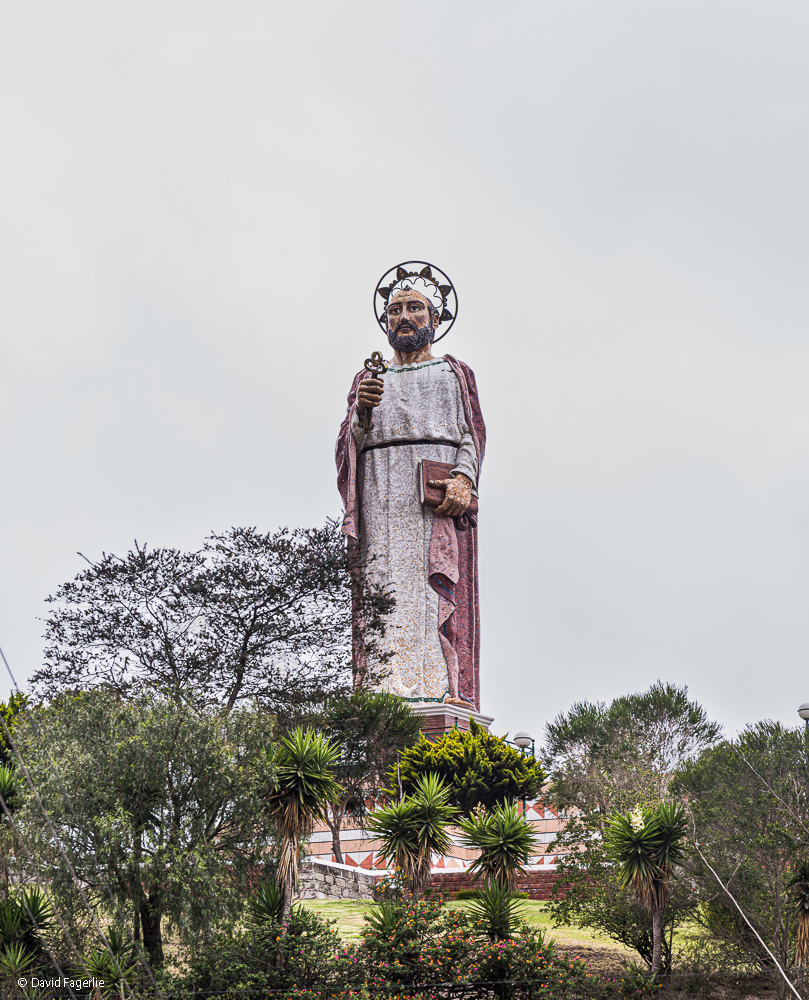
The town itself is quaint; most houses are over 100 years old and the streets are clean and pedestrian friendly. Note the beautiful textile work in the third photo below. When I was studying in Mexico traditional dress was taken out for special occasions. In Ecuador cultural dress is worn every day.
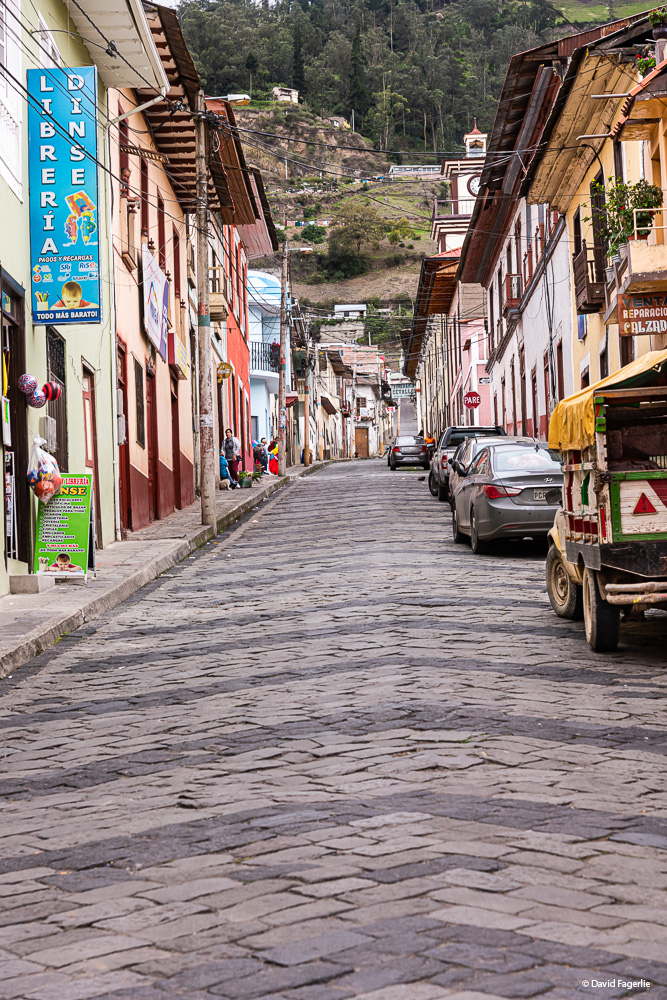
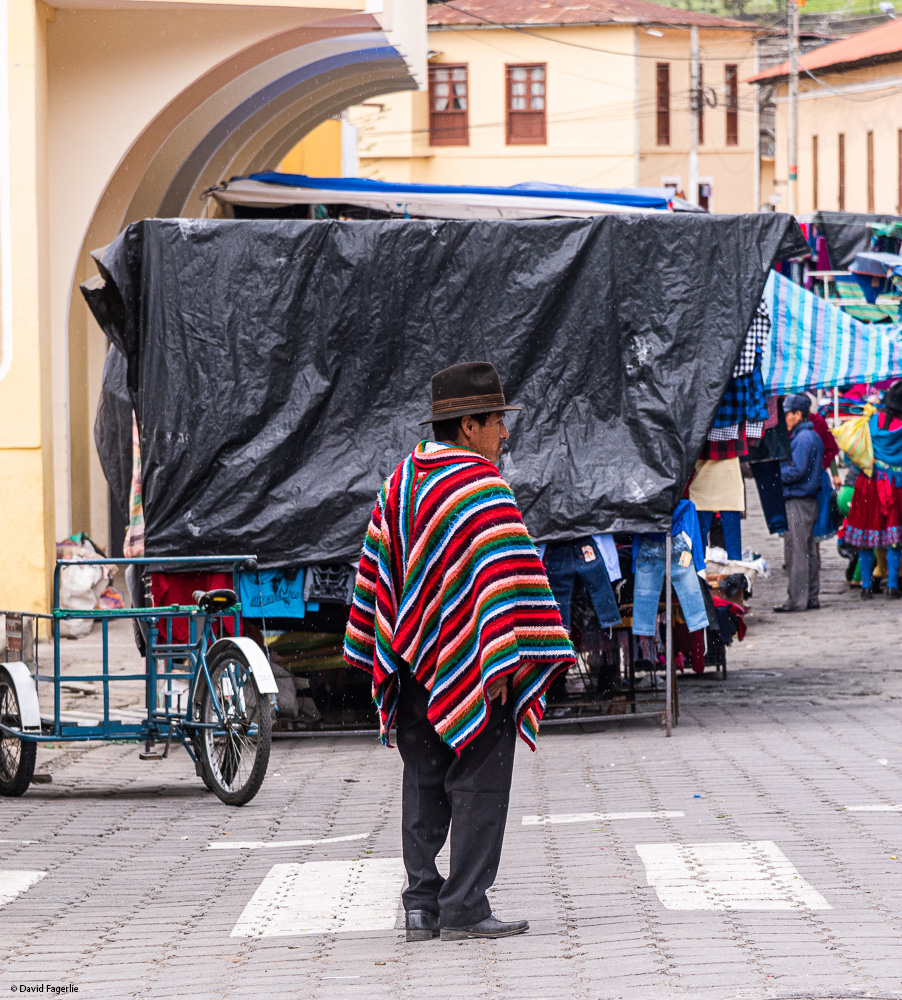
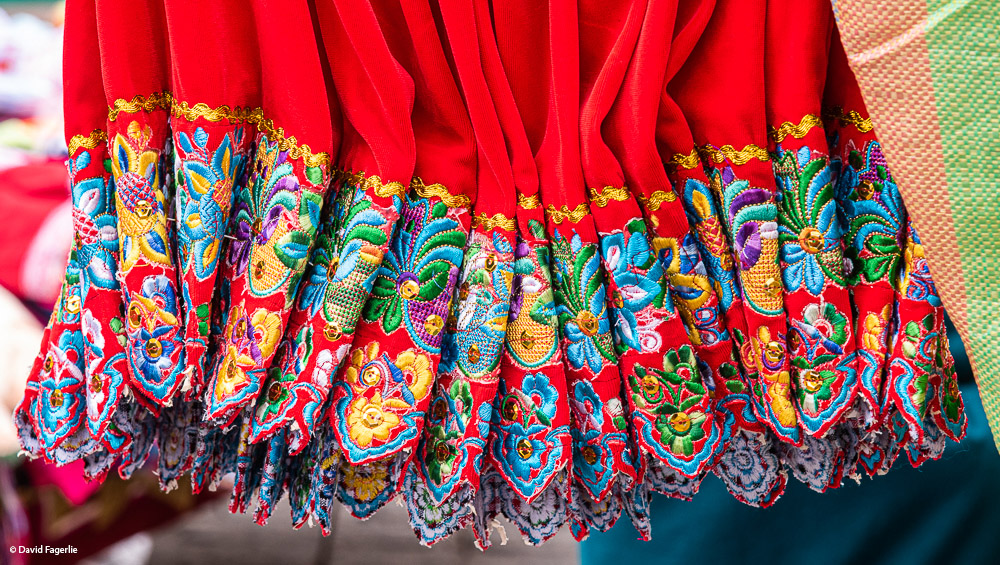
Alausí has two claims to fame. Ecuador’s rail system, built about 100 years ago, is quite extensive. Construction was very difficult. The route from Quito to Guayaquil required laying track along rocky ravines, raging rivers and through cloud forests. Building a connection between Quito and the central plateau and coastal plains was extremely difficult. Alausí is at the location of the Devil’s Nose. Devil’s Nose was named in reference to the many deaths of workers building this connecting section of the railway. The tourist ride lasts about two hours to go twelve kilometers. The train precariously hugs steep ridges as it inches its way along. (The second image is low resolution only.)
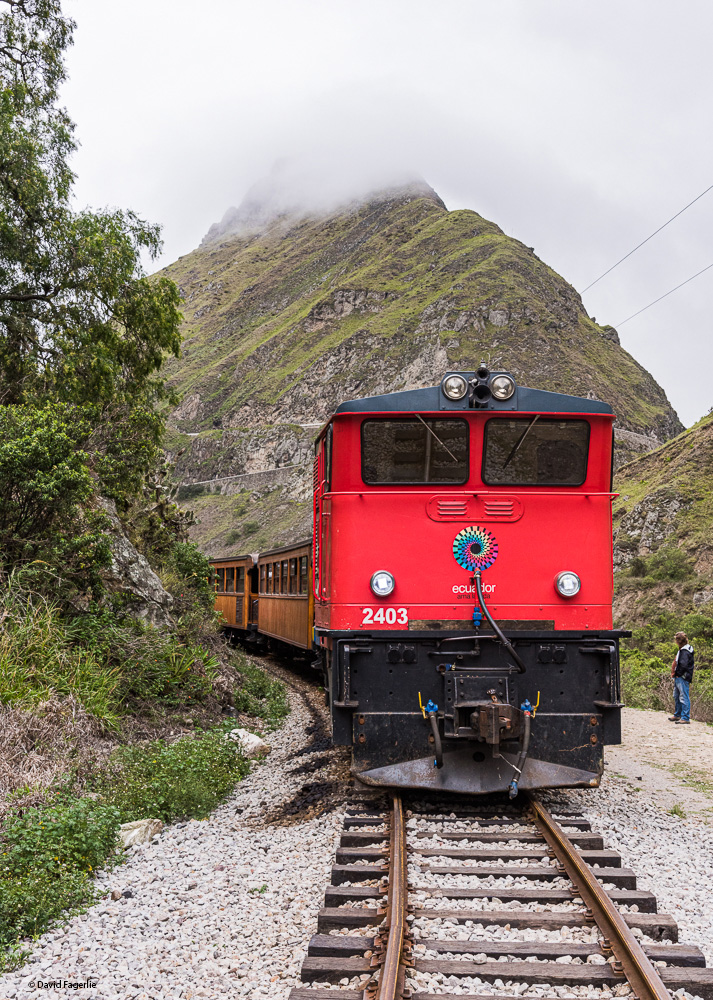
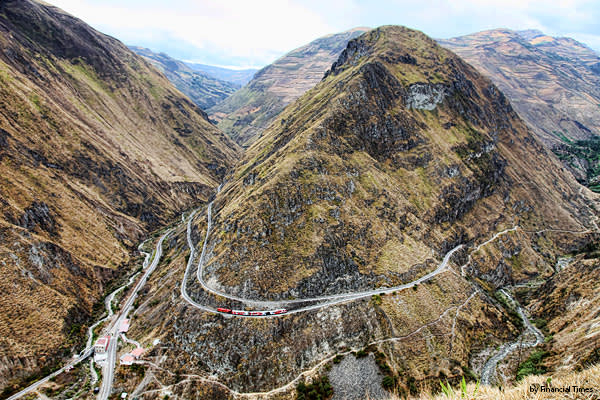
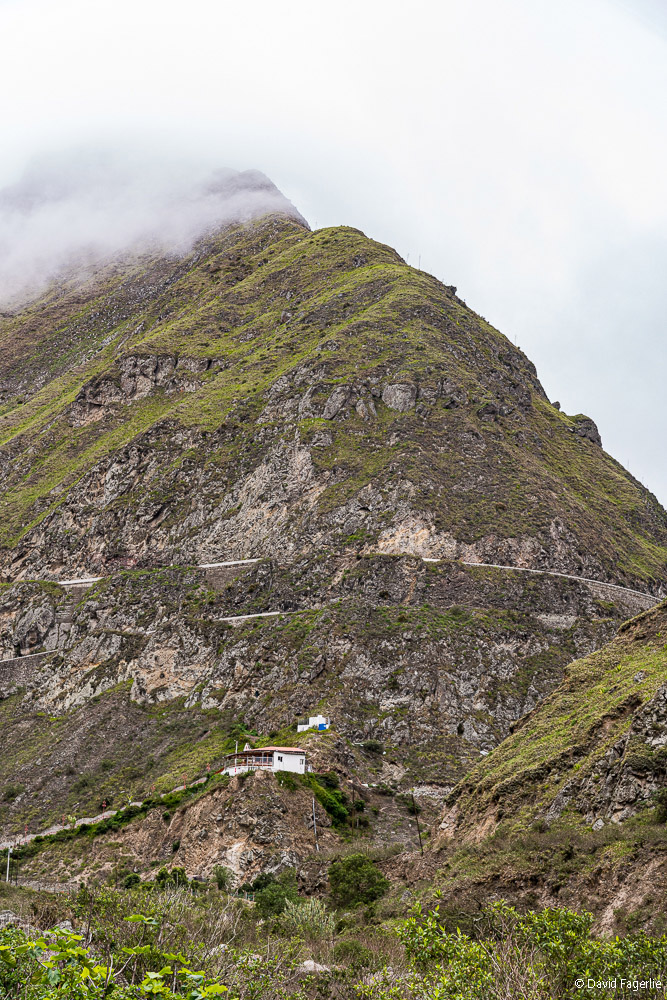
Along the track there were really big bugs. Later, I would see these beetles often around Cuenca.
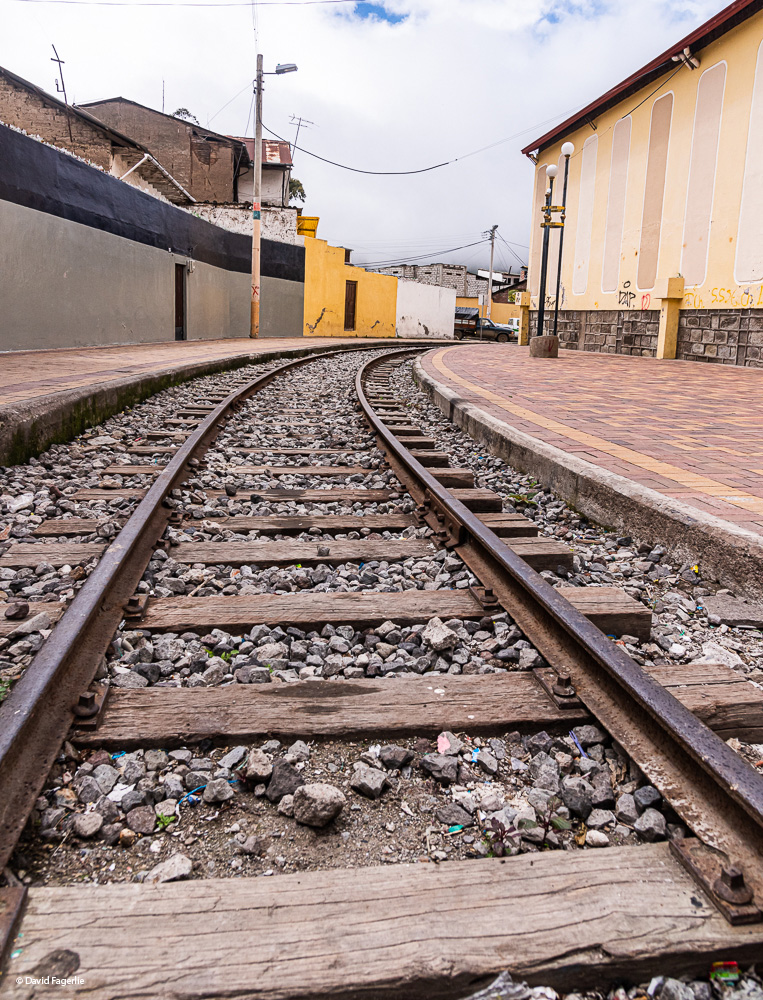
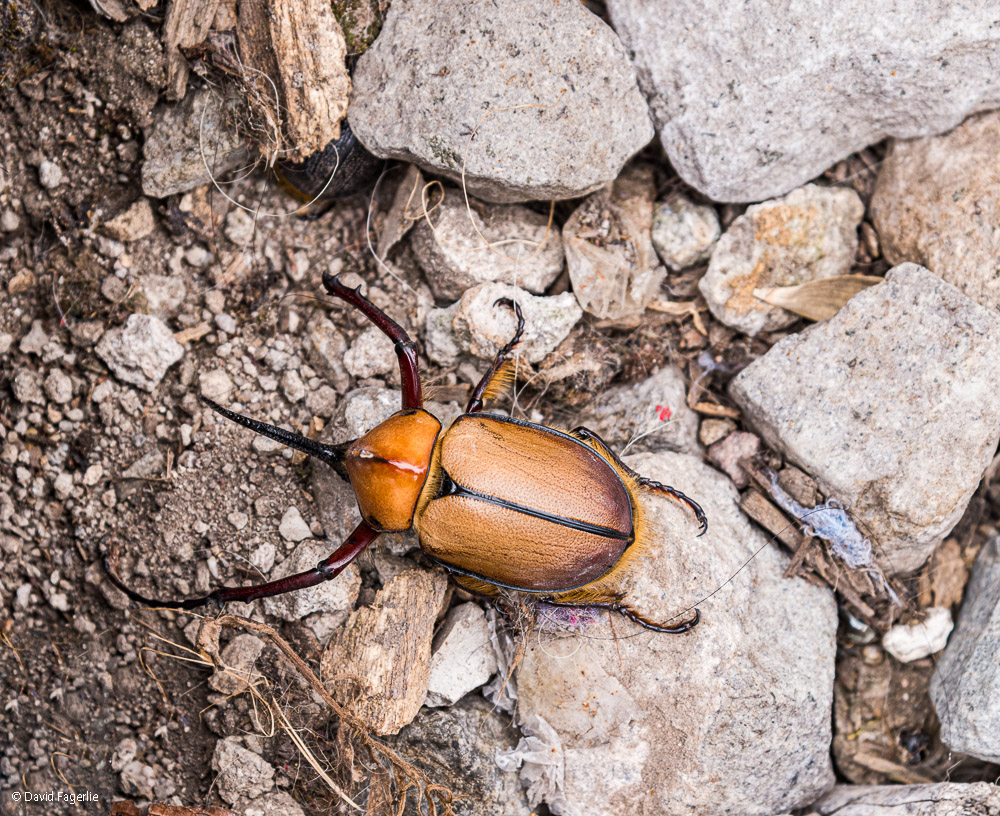
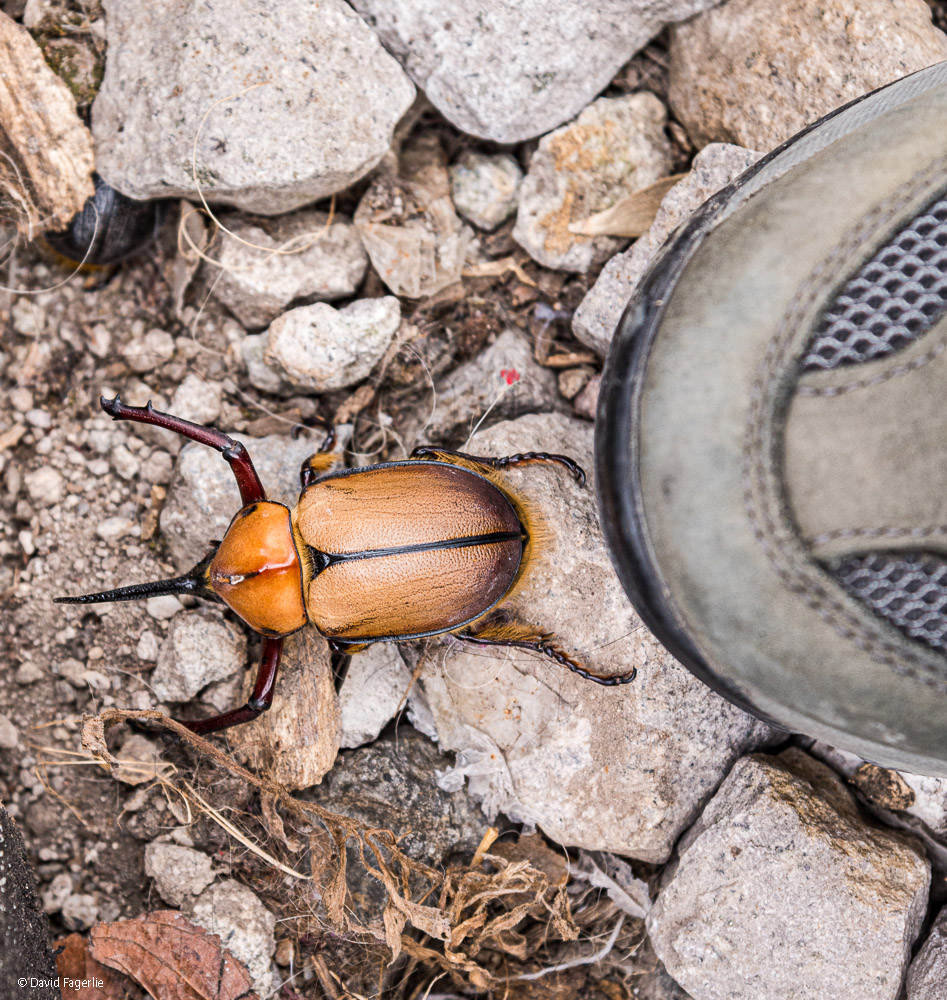
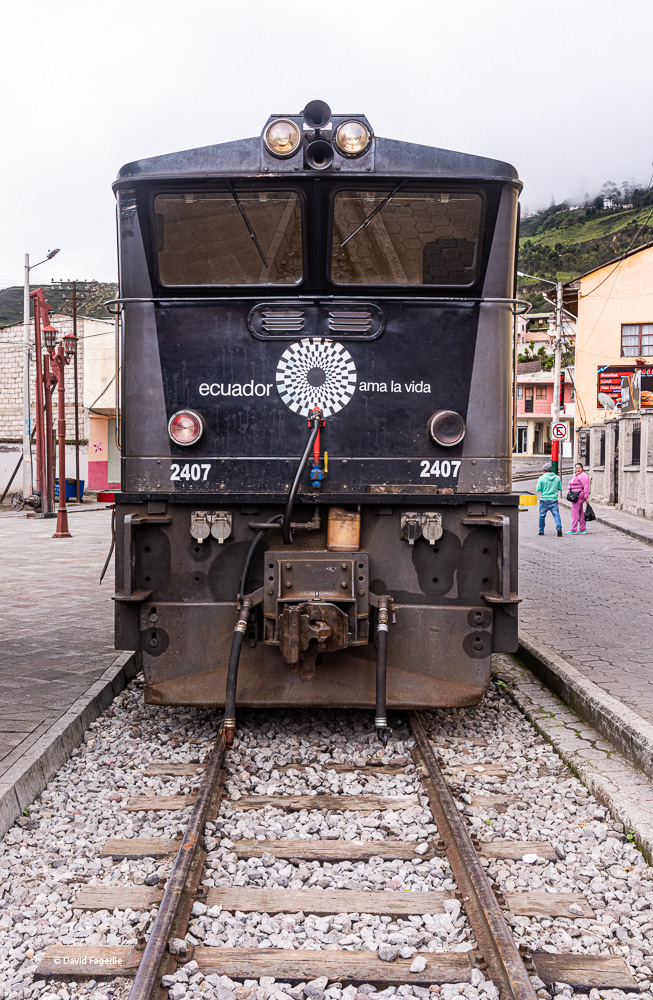
Alausí’s other claim to fame, which I found even more interesting, is its Sunday market. It only happens on Sundays when local people come from smaller communities and farms to sell and buy products and to socialize with vigor. Fascinating.
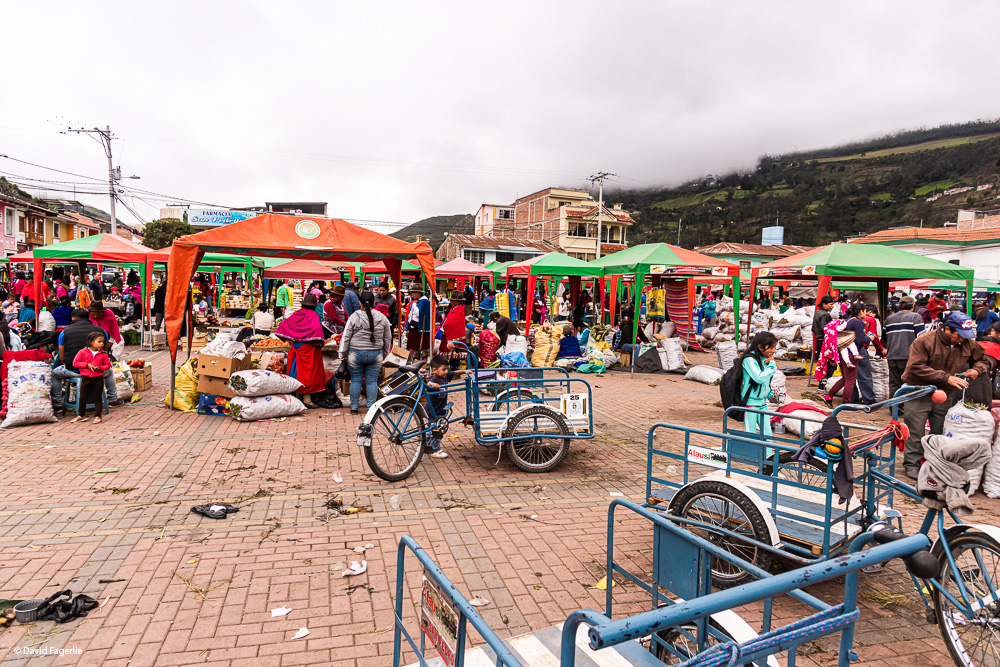
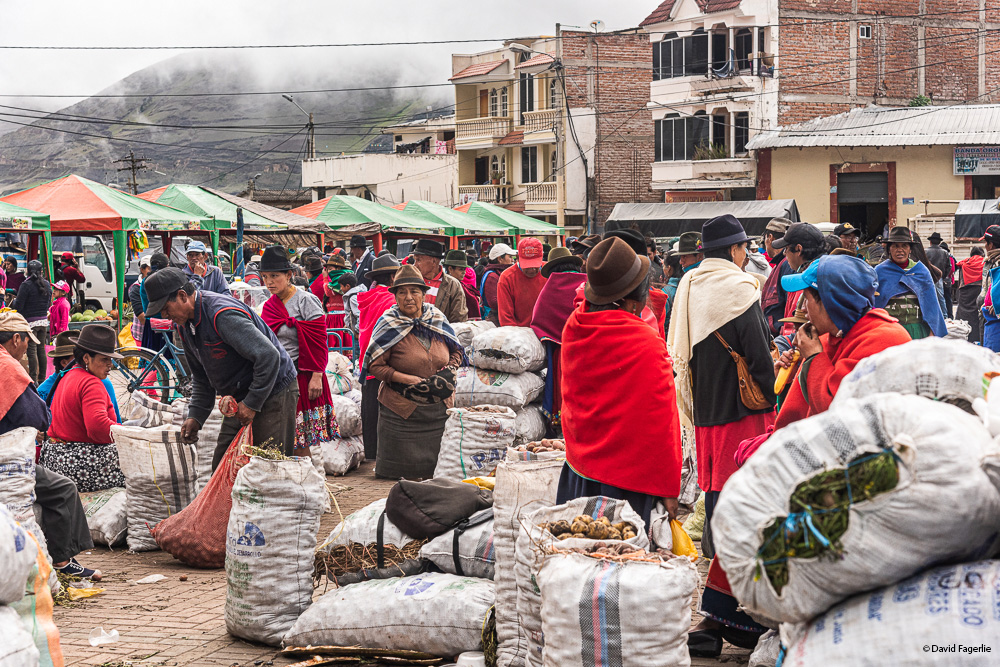
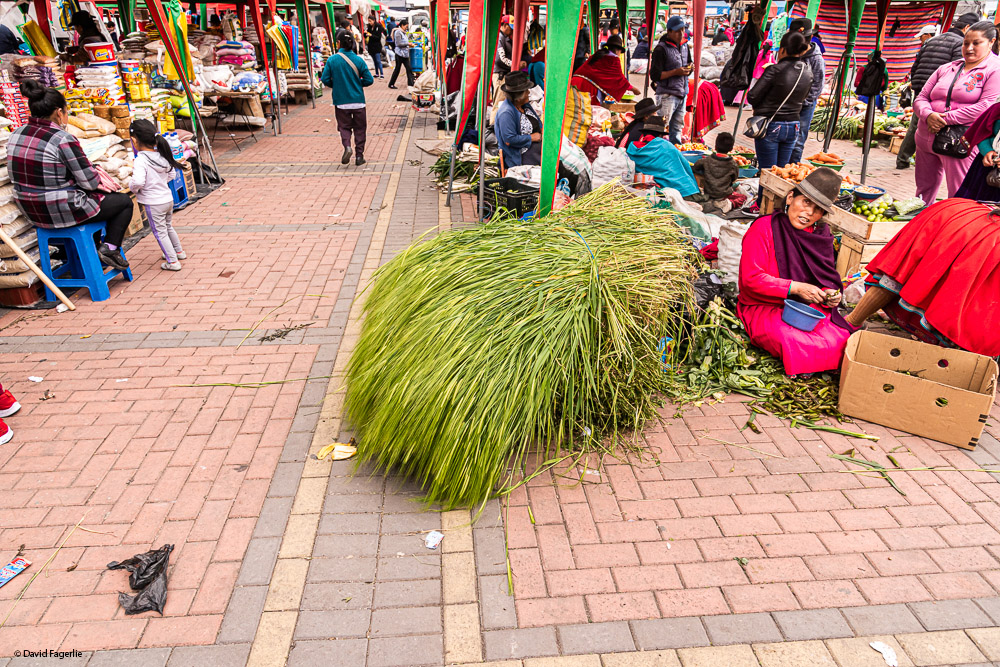
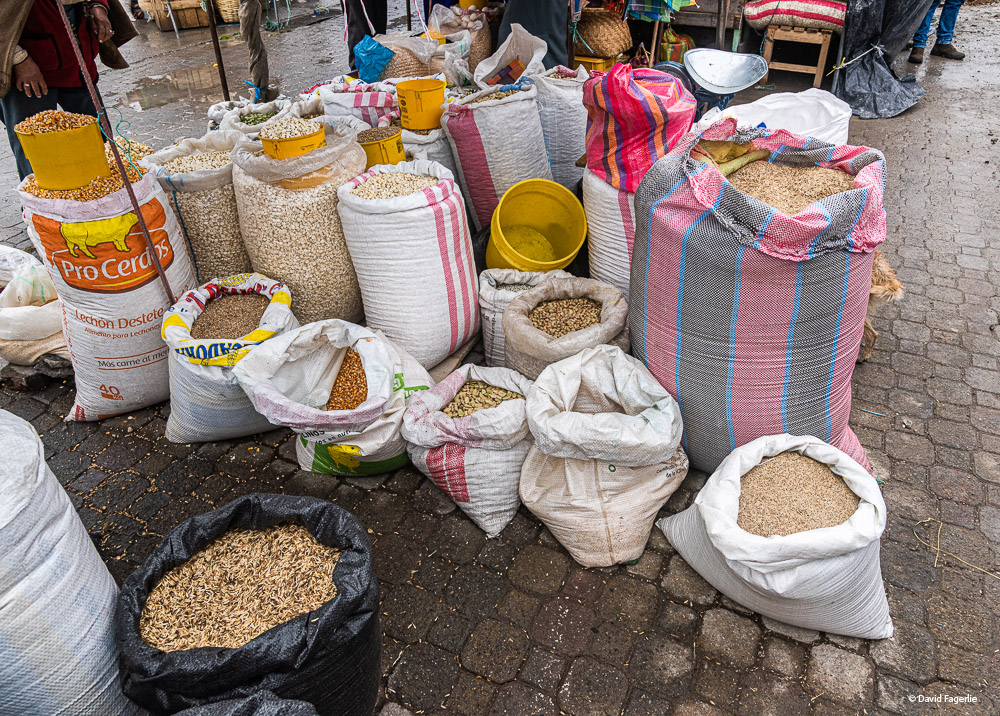
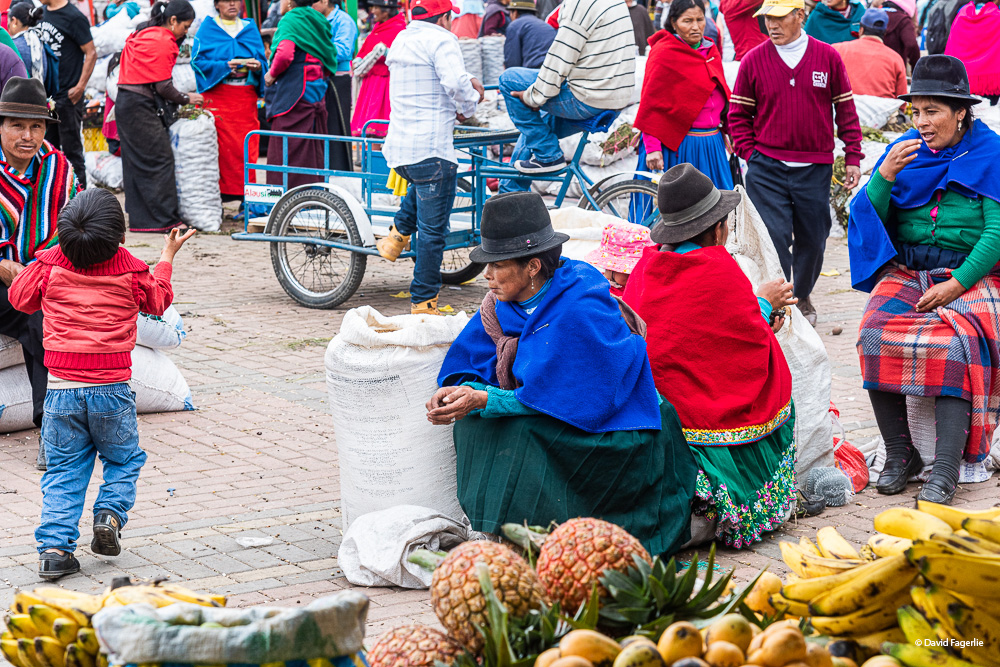
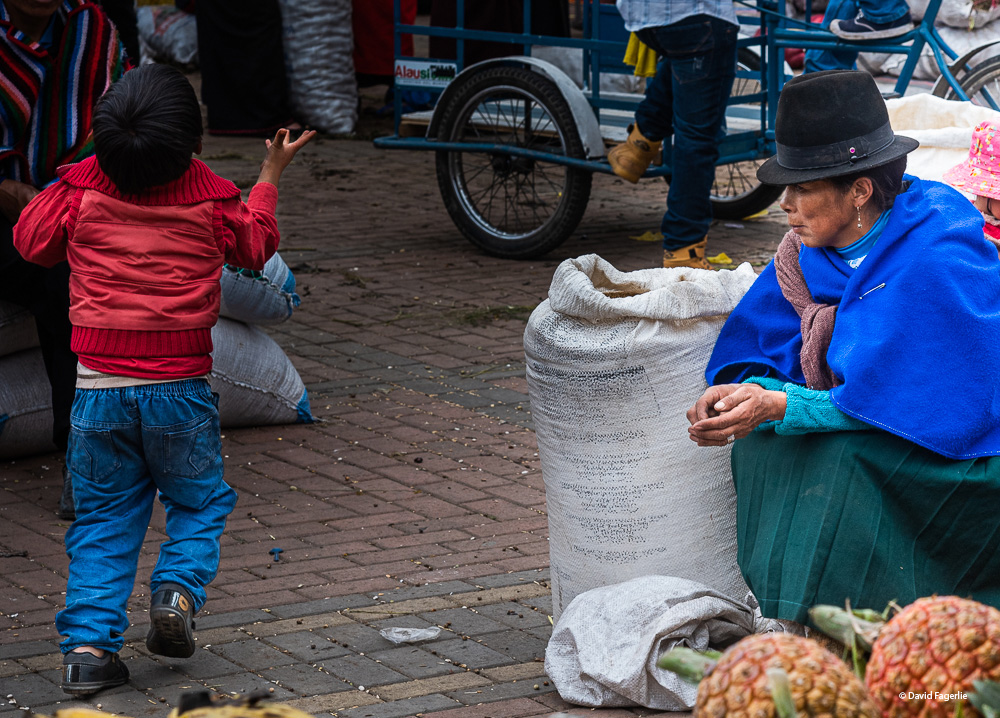
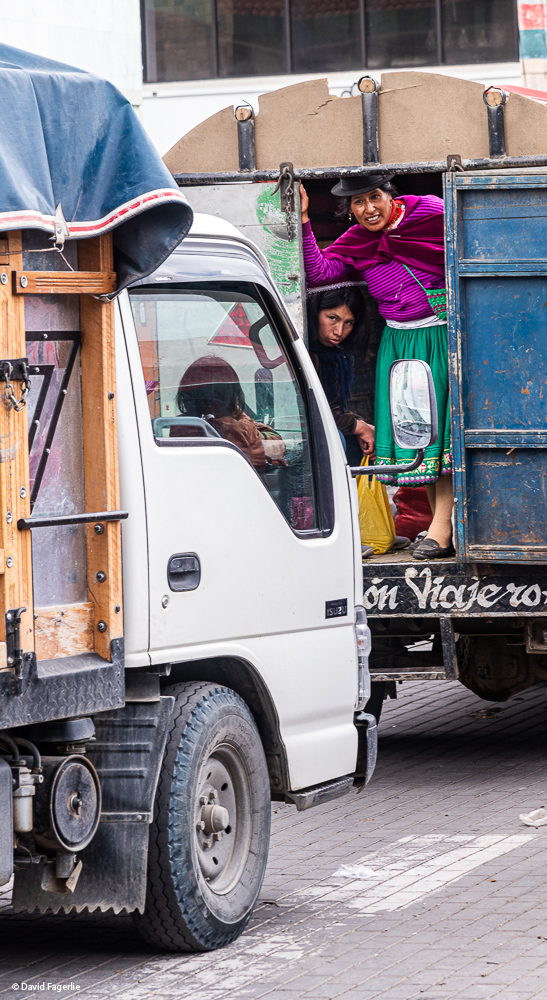
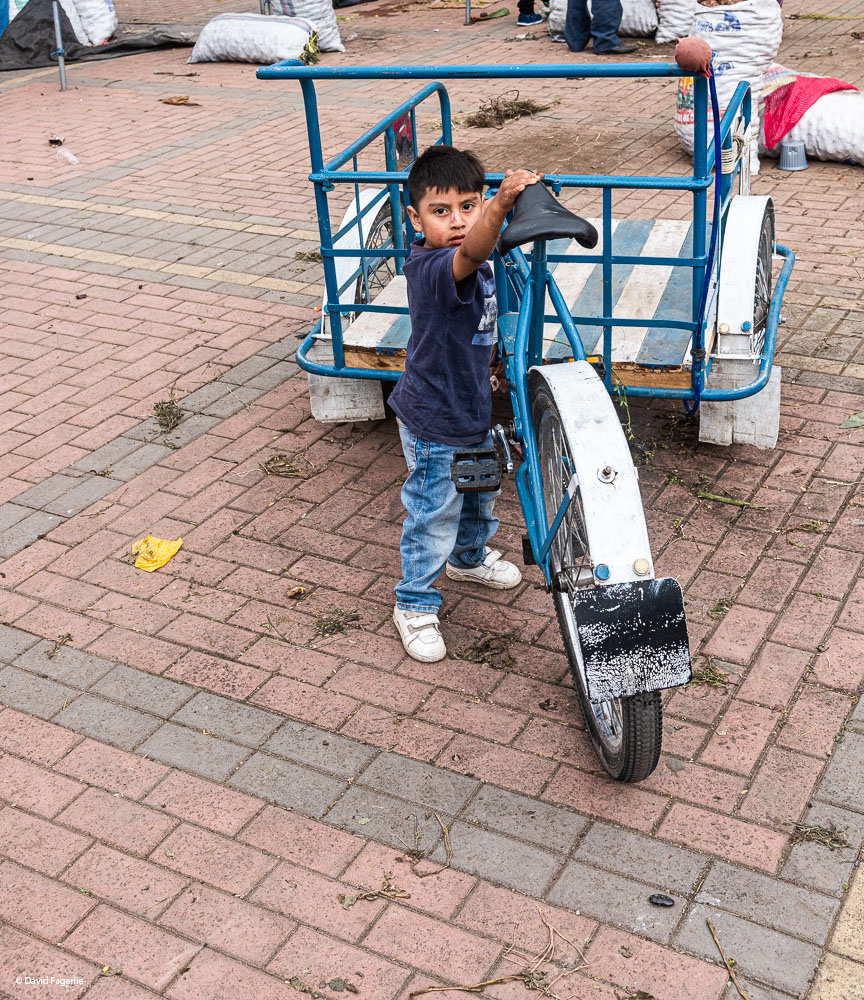
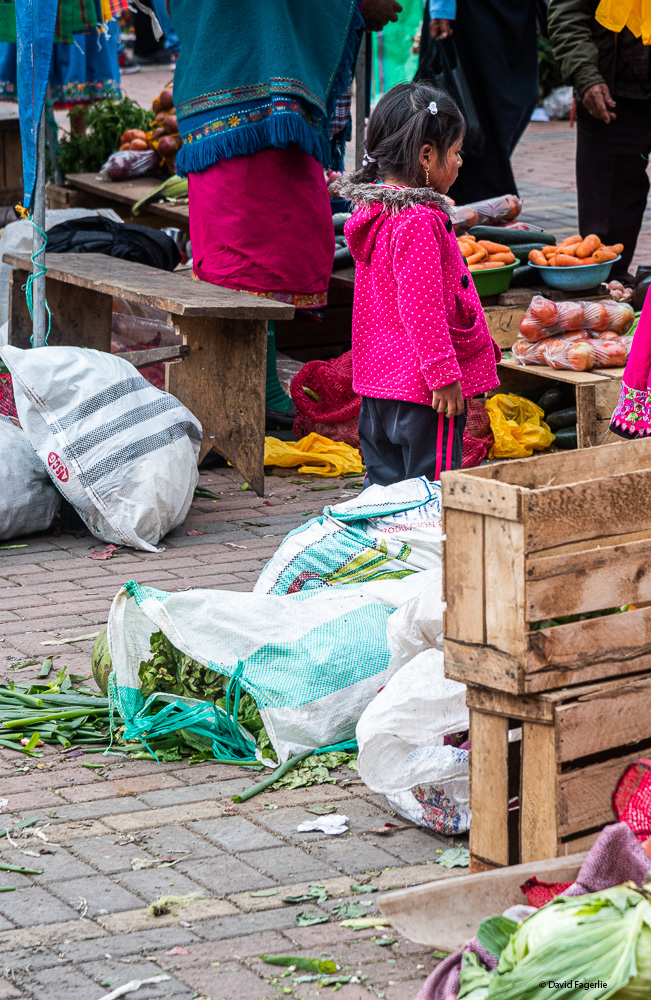
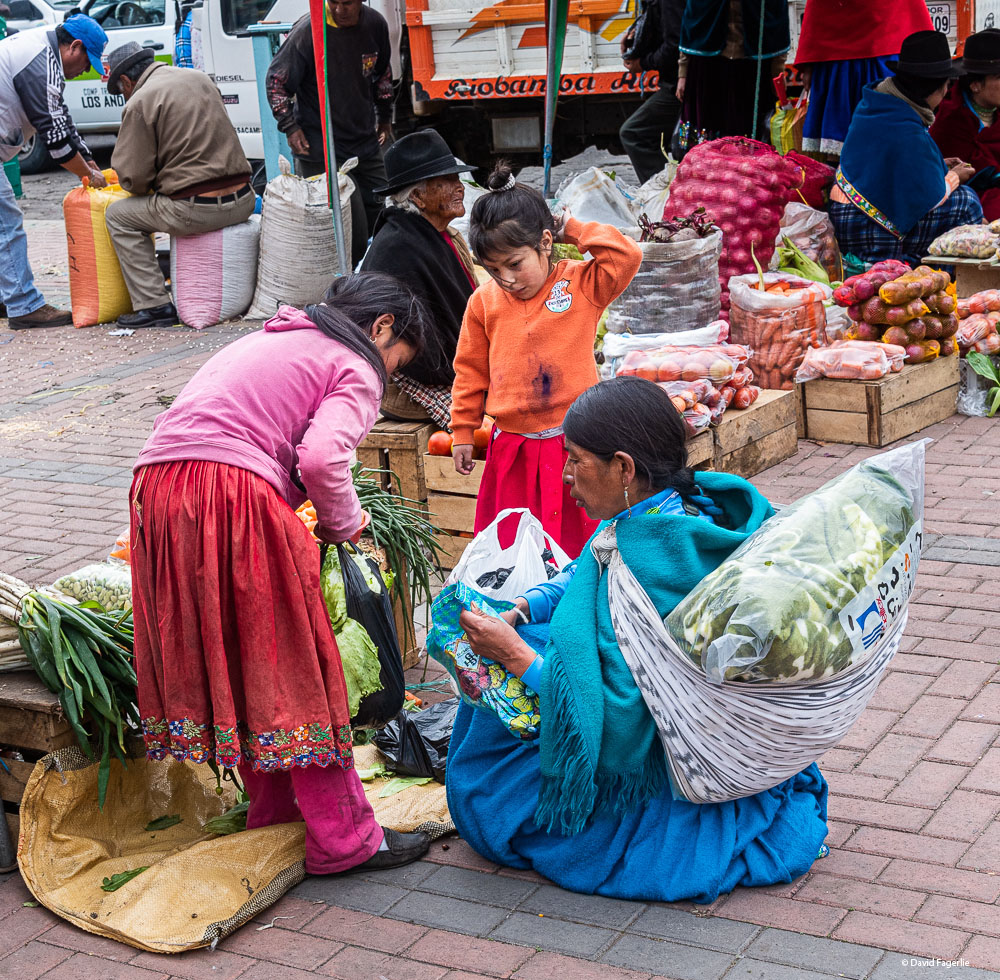
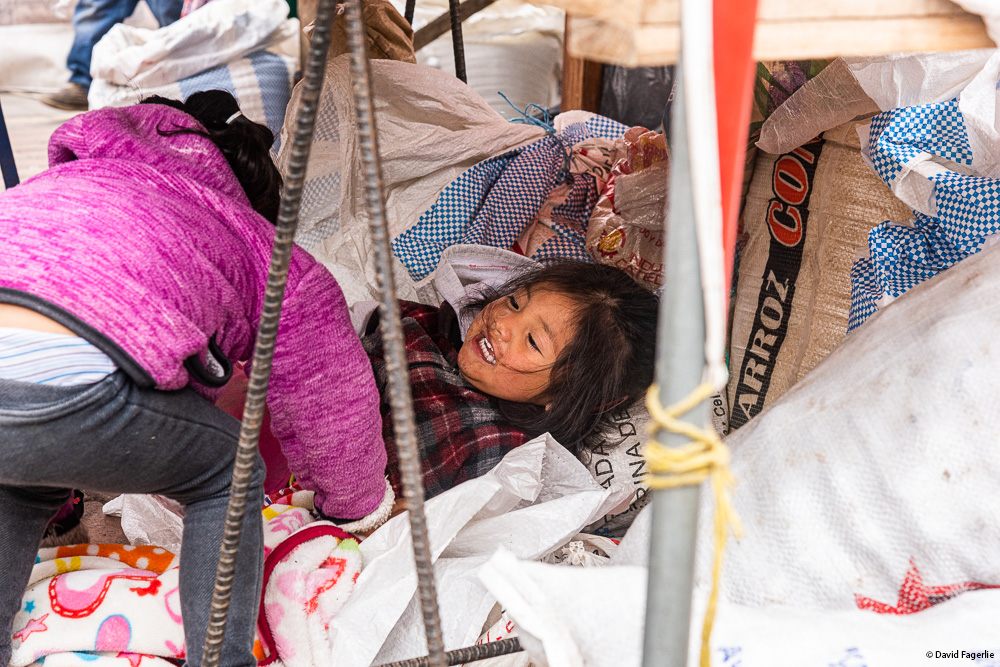
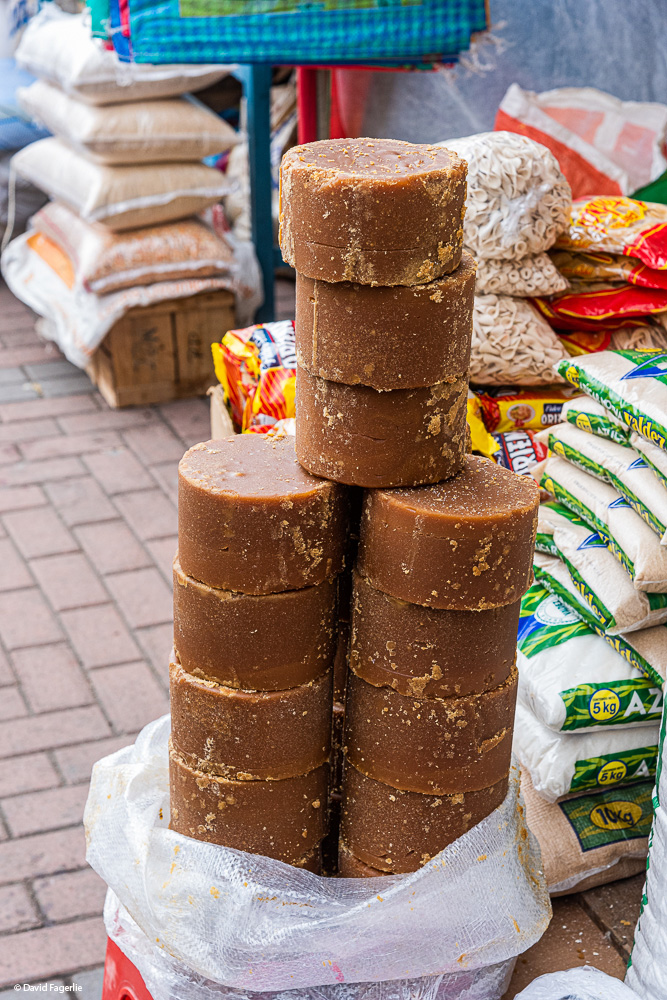
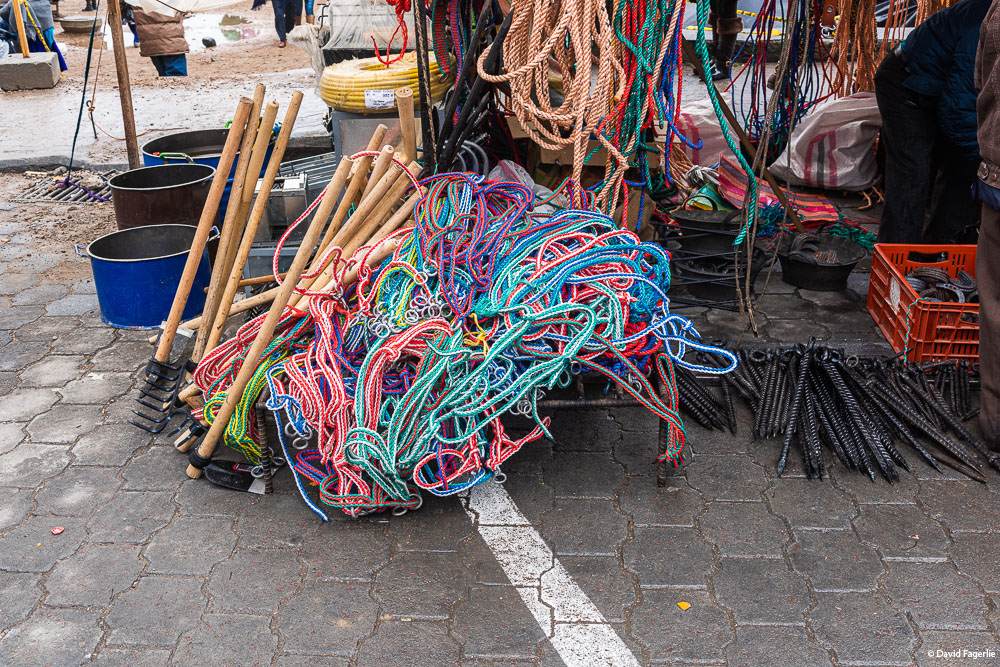

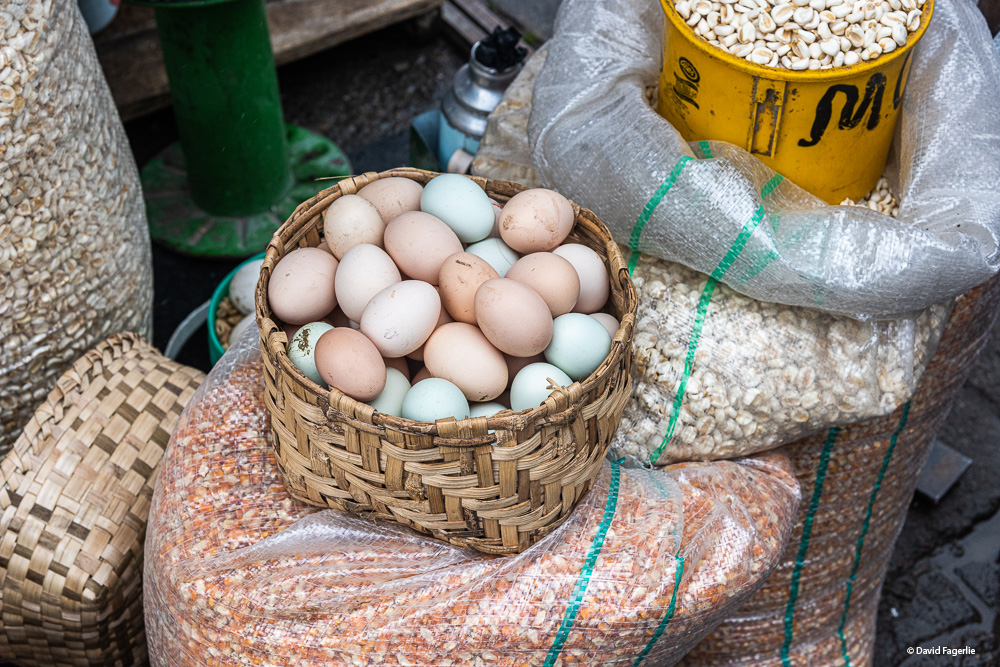
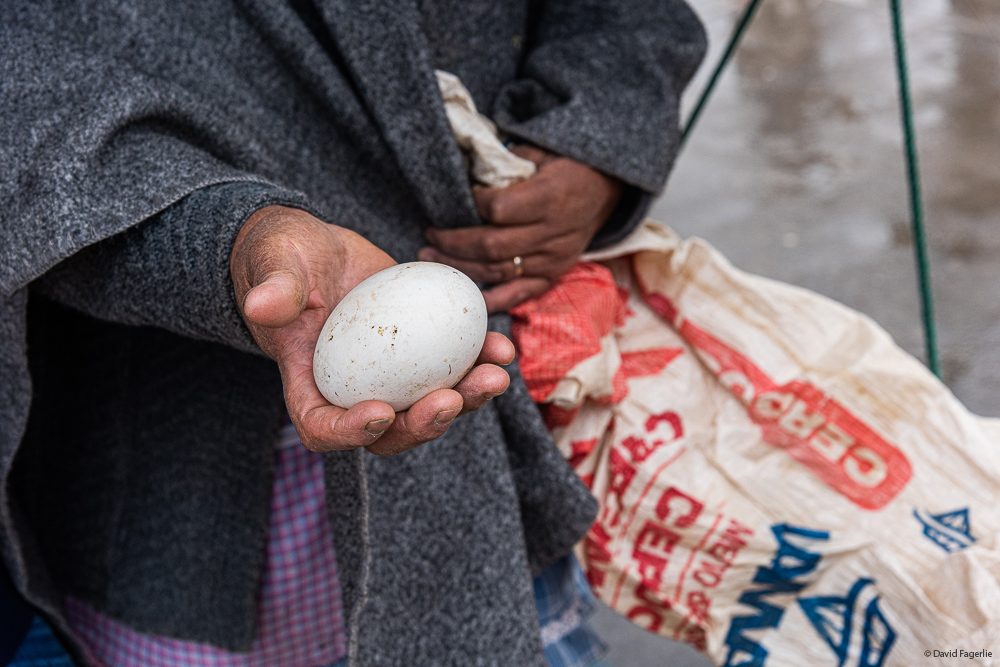
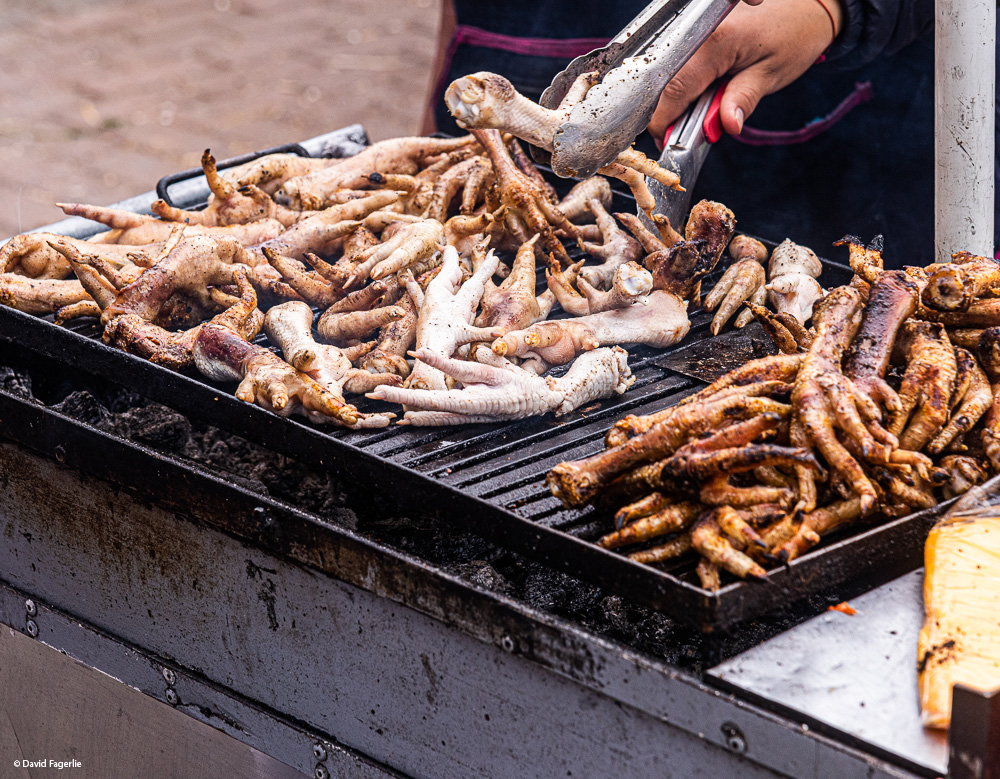
Ecuador has about 350 species of potatoes of various colors, sizes and shapes. Only fourteen of them are routinely seen in markets. Many people in rural areas wear white hats. They are made of wool but they are stiff, not floppy.
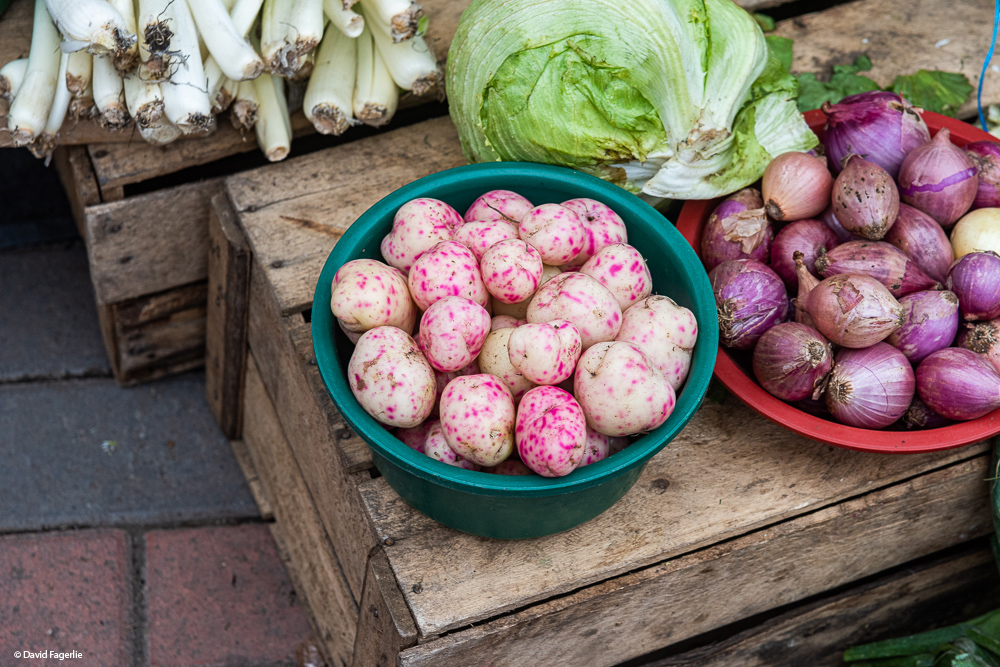
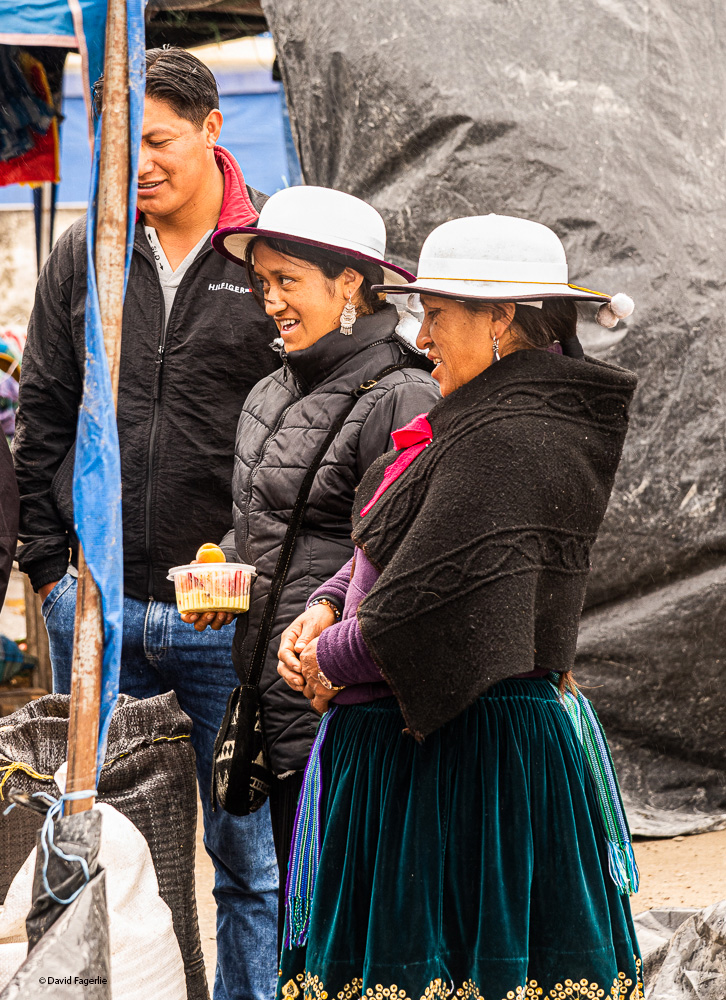
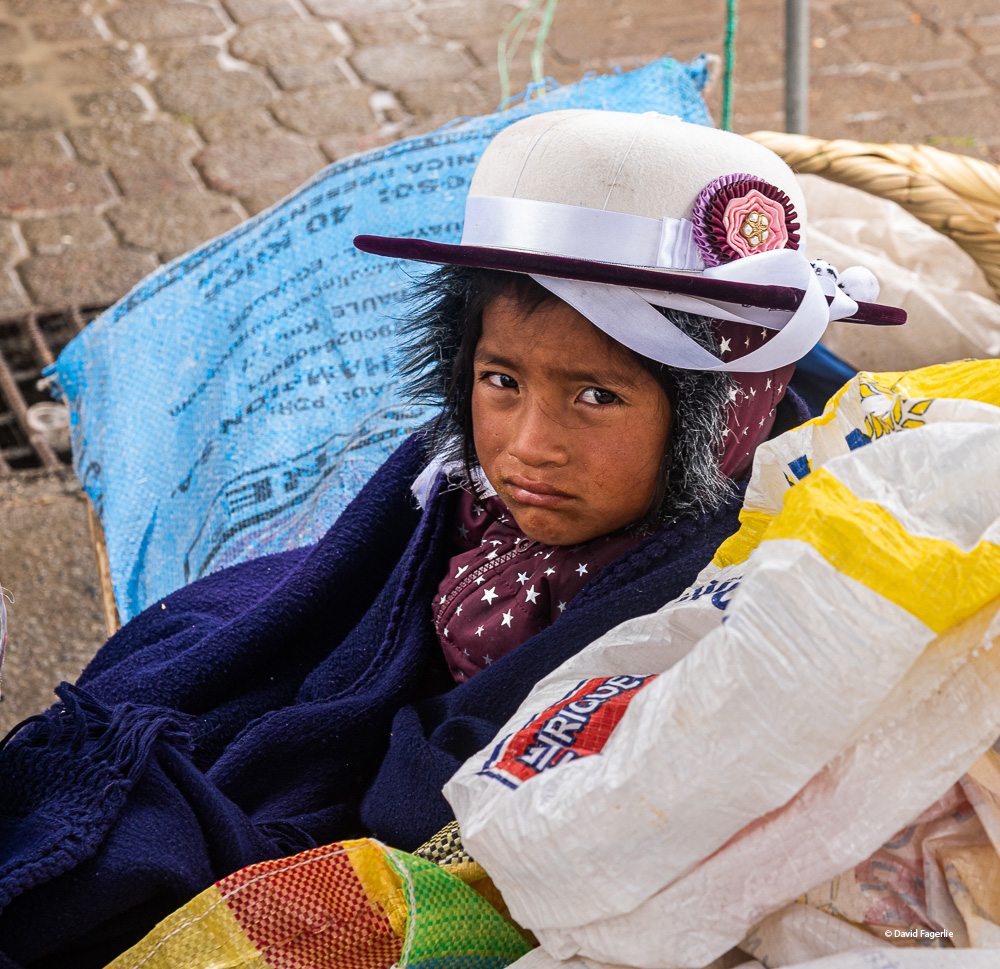
Further north, 274 kilometers from Cuenca, is the city of Riobamba (elevation 2,750 meters/9,022 feet). Riobamba is a full-fledged city with a population of about 156,000. The name comes from the Spanish word for river (rio) and the Kichwa word for valley (bamba). The Spanish founded Riobamba in 1534.
Kichwa, also related to Quechua, is spoken throughout Ecuador, predating the Spanish by thousands of years. Many ecuadorian words are Kichwa or a mix of Spanish and Kichwa. The Puhurá were the first to live in the Riobamba area, followed briefly by the Inca.
“Various theories regarding the origins of Quechua are hotly disputed. It is thought by some scholars that Quechua originated on the central coast of Peru around 2,600 BC. The Inca kings of Cuzco made Quechua their official language. With the Inca conquest of Peru in the 14th century, Quechua became Peru’s lingua franca. The Inca Empire flourished in what is today’s Peru from 1438 to 1533 AD. Although the empire lasted only about 100 years, the Incas spread Quechua to areas that today are Ecuador, Bolivia, and Chile. When the Spanish conquistadors arrived in the 16th century AD, Quechua had already spread throughout a large portion of the South American continent. The languages continued to spread into areas that were not part of the Inca empire such as Colombia, Brazil, and Argentina.” – MustGo Travel
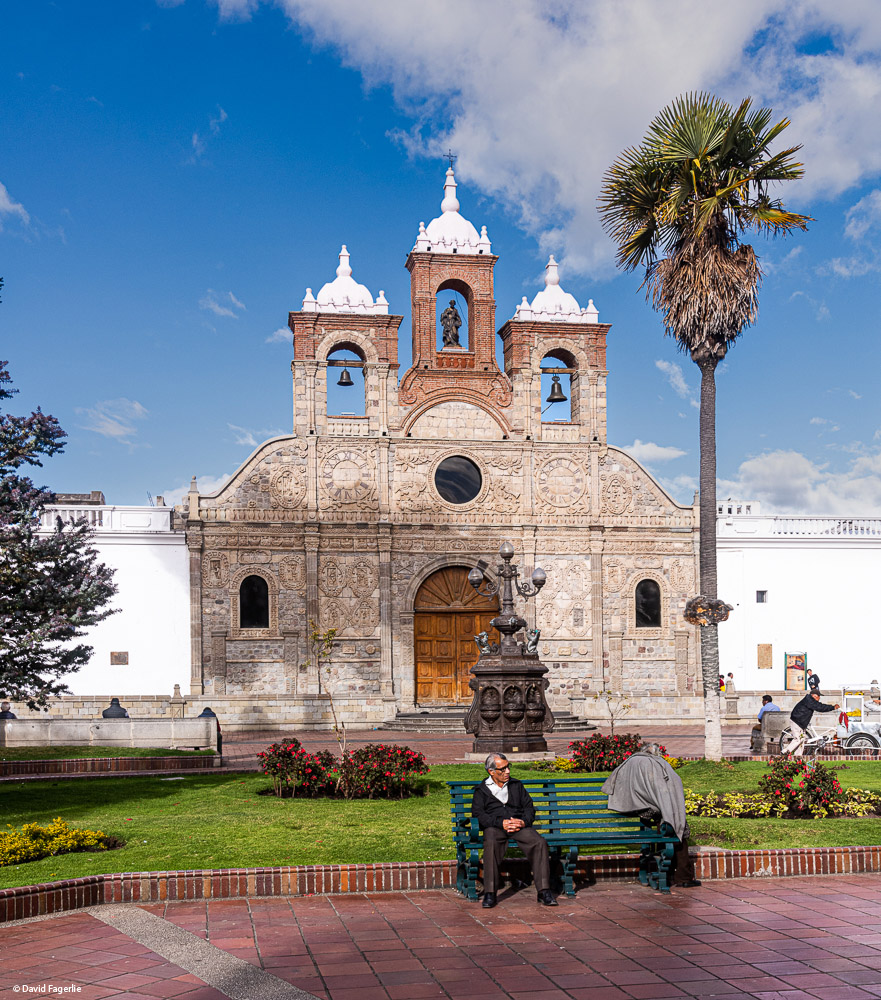
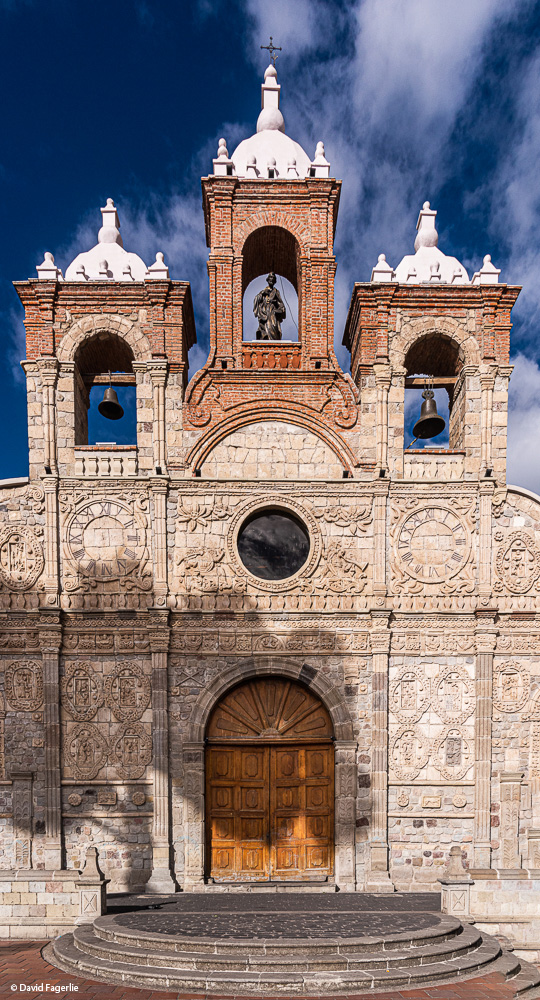
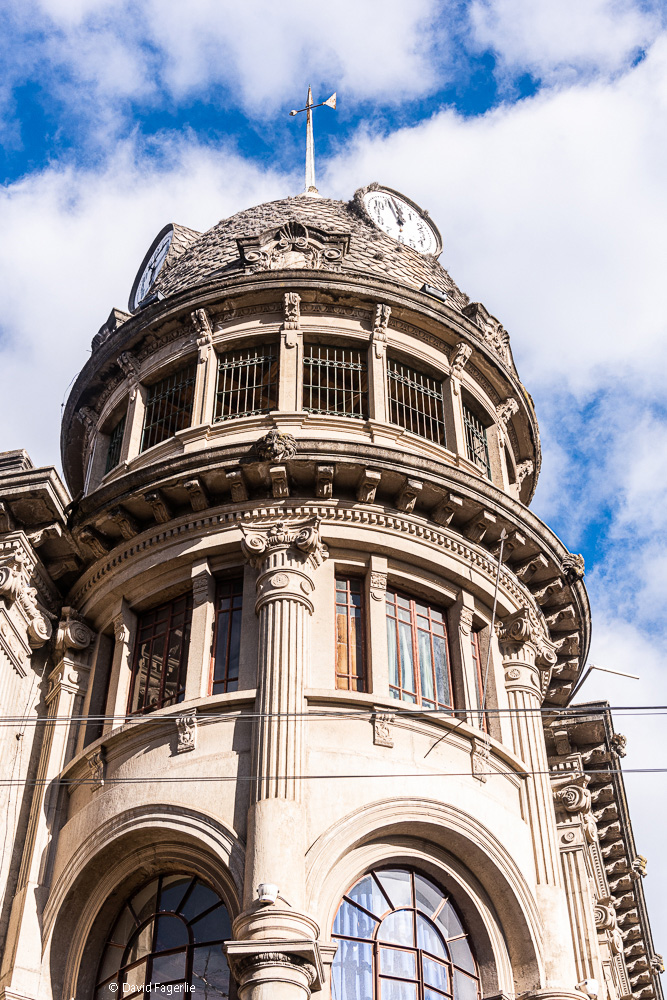
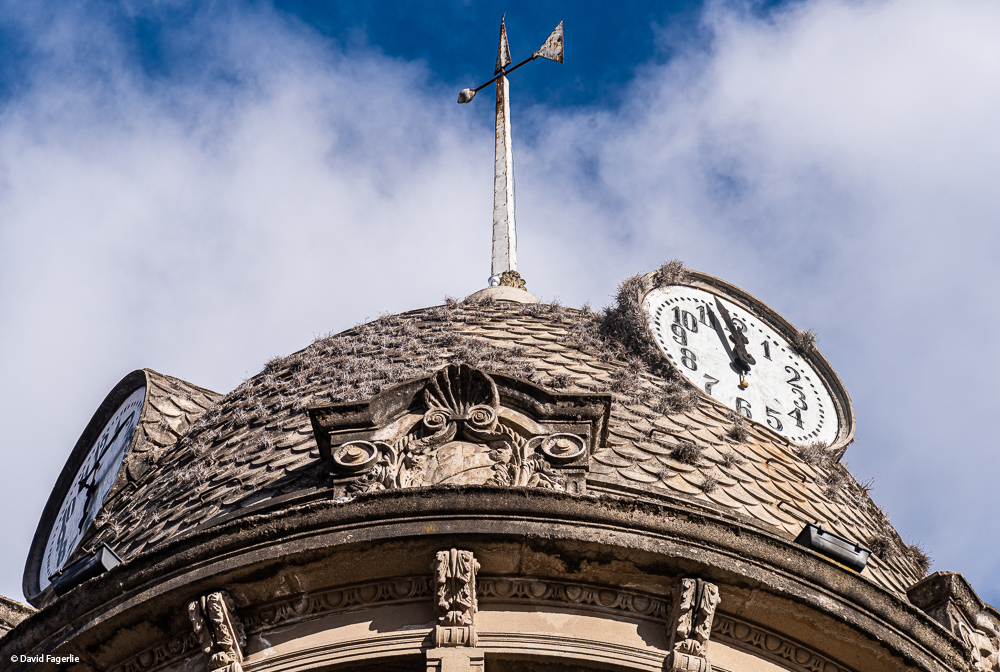
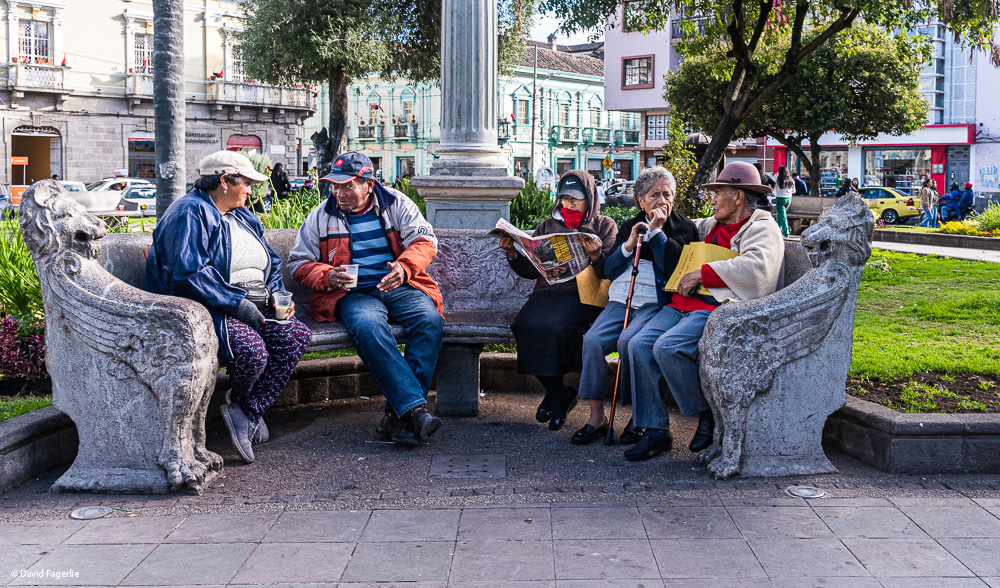
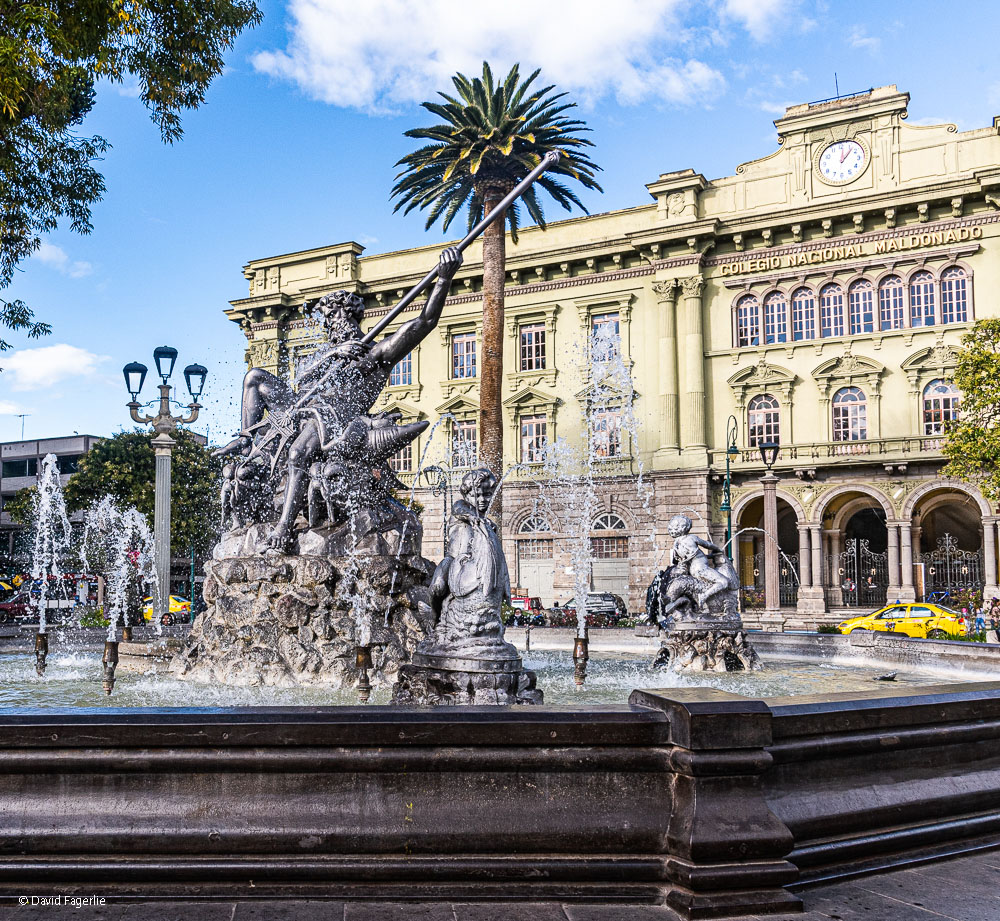
Riobamba is the jumping off point to see the volcano Chimborazo, which is a little over an hour away by car. Topping out at 6,263 meters (20,549 feet) Chimborazo is the tallest mountain in Ecuador. Some consider Chimborazo to be the tallest mountain in the world. Mount Everest is the tallest measured by elevation from sea level. However, Chimborazo is the closest point on earth to places like the space station. Because Chimborazo is so close to the equator, it benefits from the equatorial bulge. I was shocked to learn that the bulge is such a magnificent force that a mountain would be lifted 10,000 feet or more!
Upon entering the Chimborazo Wildlife Refuge the gravel road up the mountain allowed for a quick ascent. Once we reached an elevation that Vicuña liked, we stopped to photograph them. Vicuñas, relatives of llamas, are one of two “camelids” found in South America. They produce small amounts of very fine wool. When knitted together, Vicuña wool is very soft and warm. Because Vicuña can be shorn only once every three years their wool is very expensive. Authorities shear them on a three-year schedule to prevent poaching. The Inca highly valued Vicuña wool and only royalty could wear garments made of it. Since the Incas, Vicuñas have been protected by law. A Vicuña scarf sells for about $1,500 in the USA. Vicuña sport coats from the Italian tailoring house of Kiton sold for at least $21,000 as of 2013.
Vicuñas live at altitudes ranging from 3,200 to 4,800 meters (10,500 to 15,700 feet). They feed on high altitude grasses in daytime and spend nighttime on the slopes. The sun keeps the environment warm in daytime but at night the Andes become very cold. Vicuñas are protected from cold by their coat, an adaptation which traps warm air close to the body.
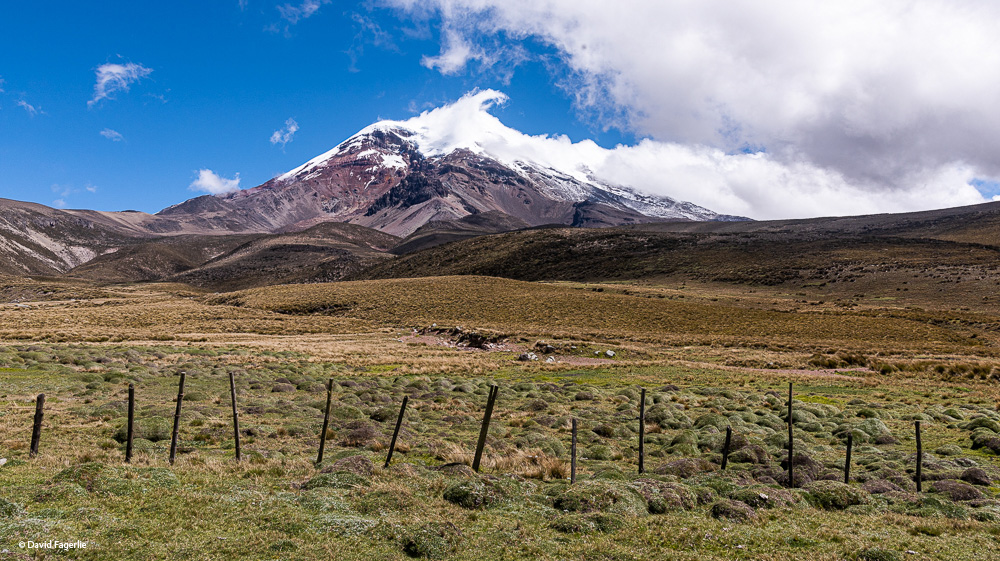
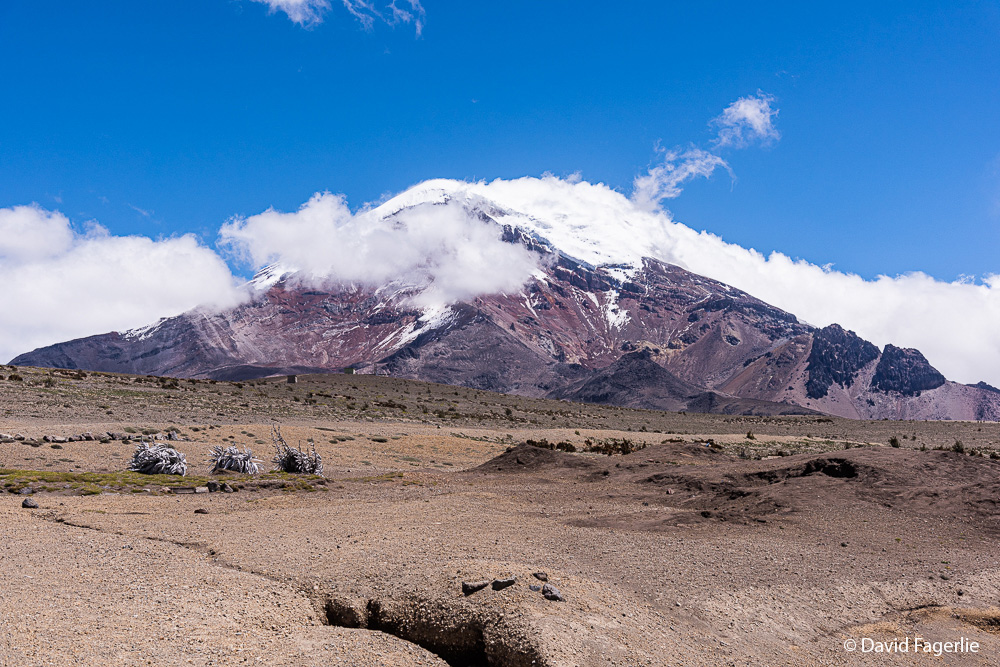
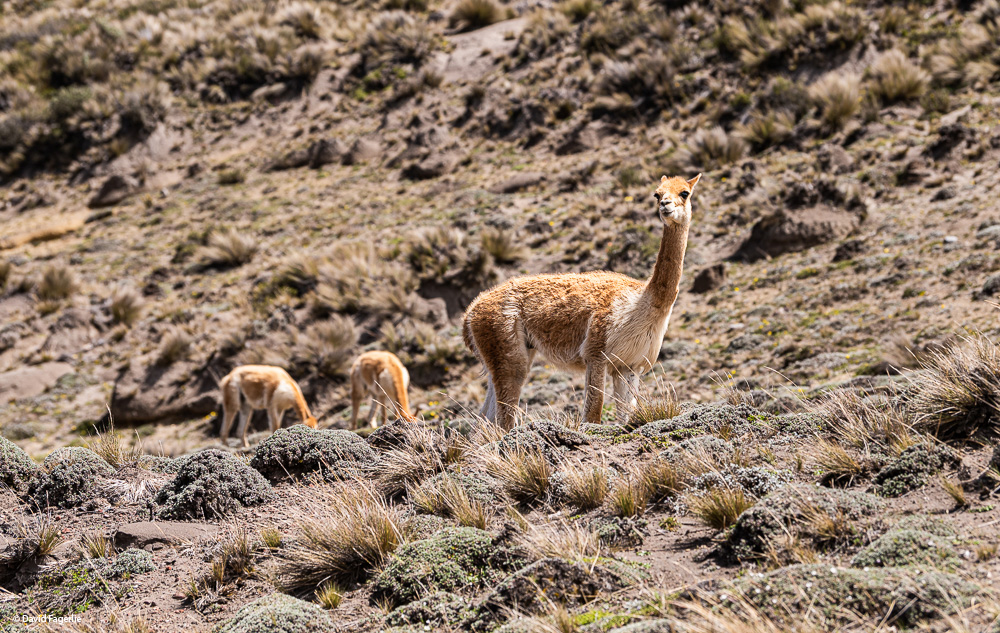
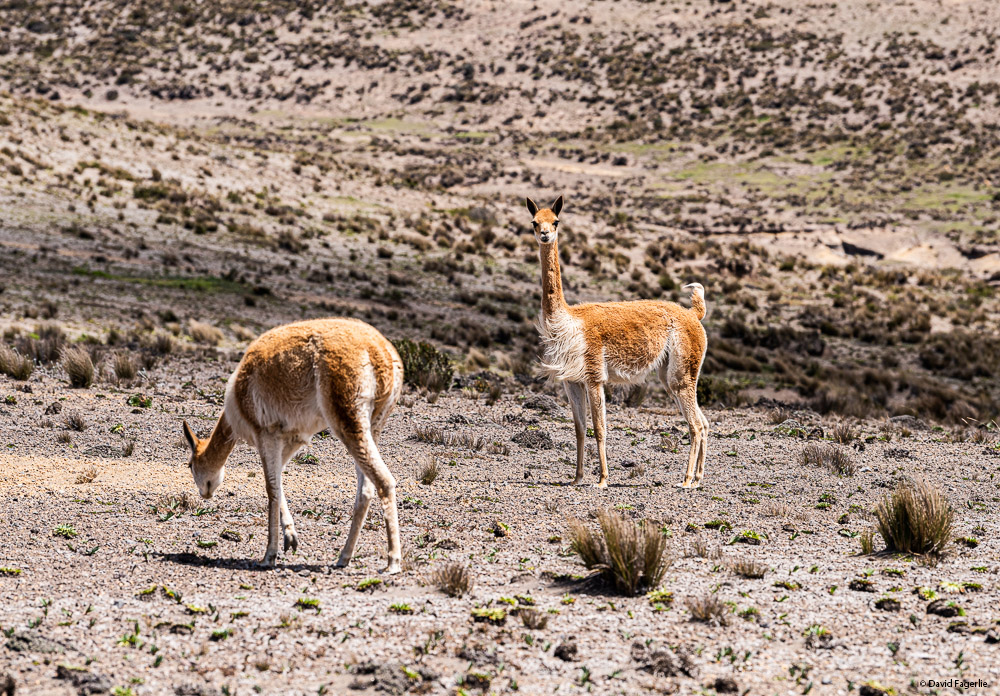
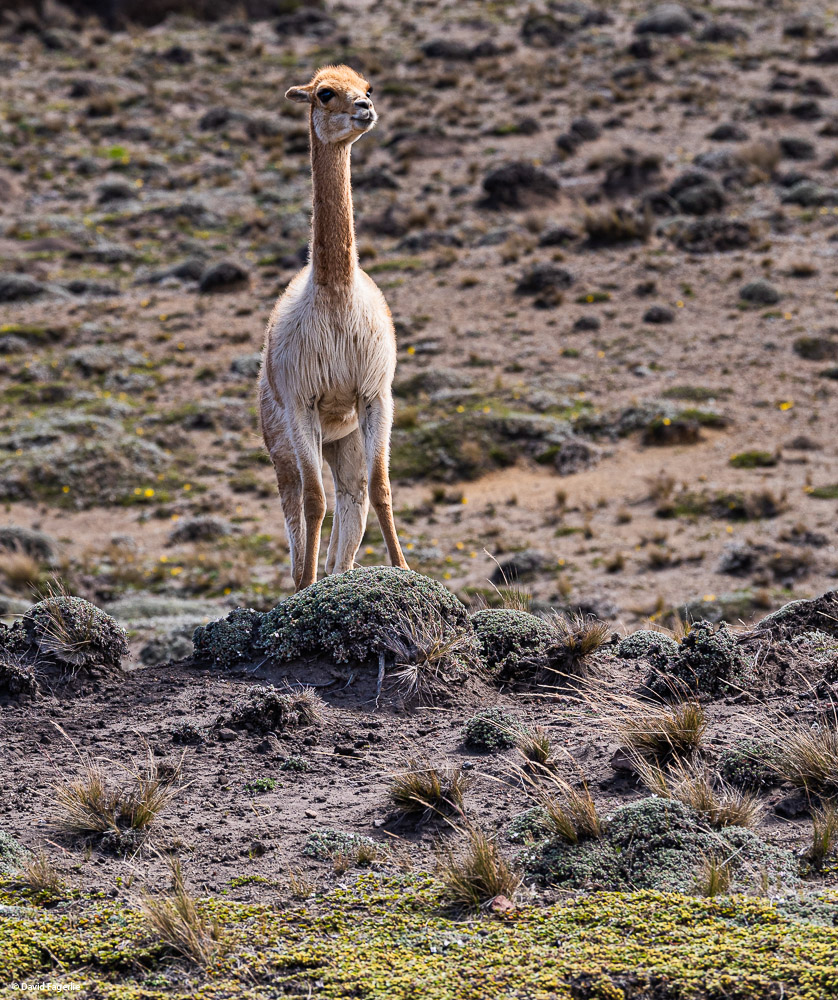
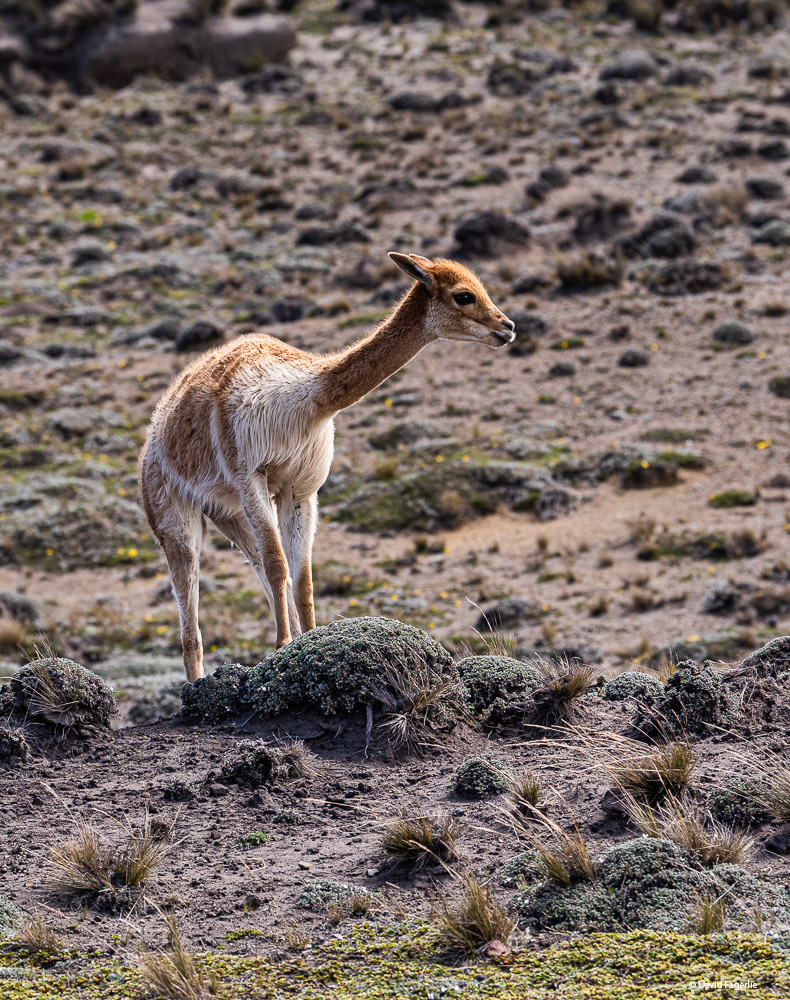
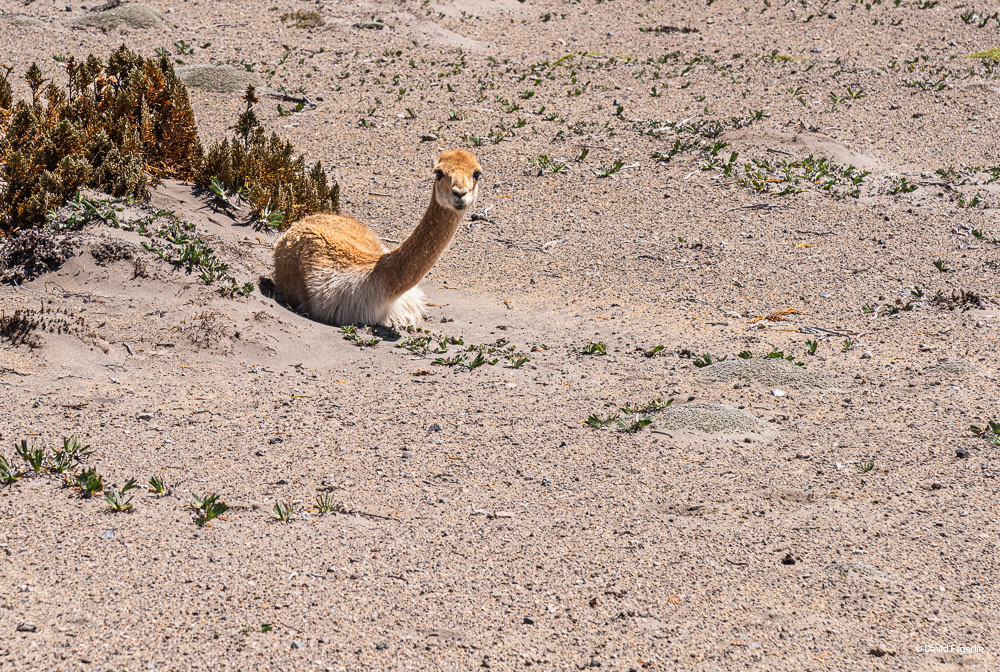
We drove as high as we could go. I was the one person that wanted to hike to higher altitudes. So, our guide extraordinaire, Maria Jose (both words are used to form her first name, a common custom in Ecuador), led the way. At the start of the climb there were symbolic grave stones, a memorial to those killed on the mountain. We reached somewhere between 17,500 and 18,000 feet before I ran out of time.
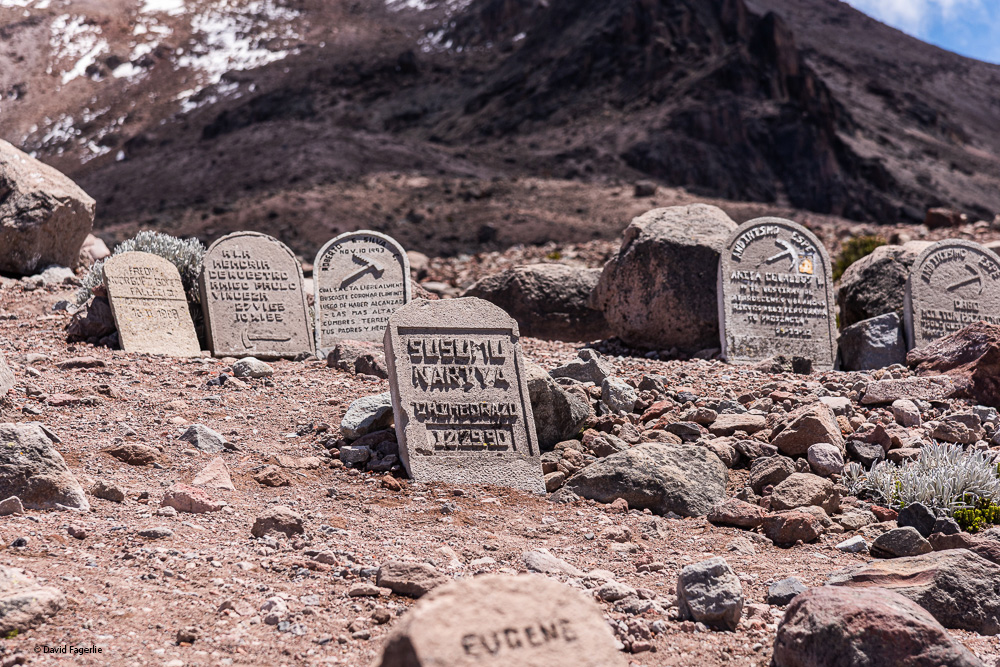
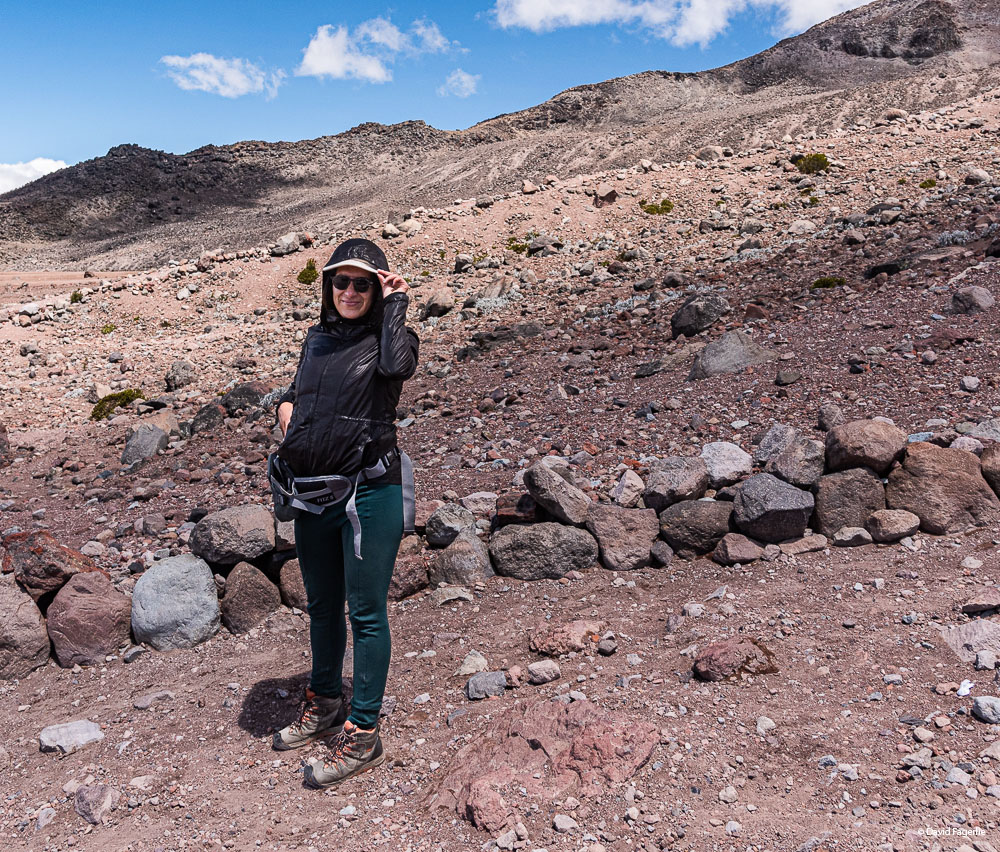
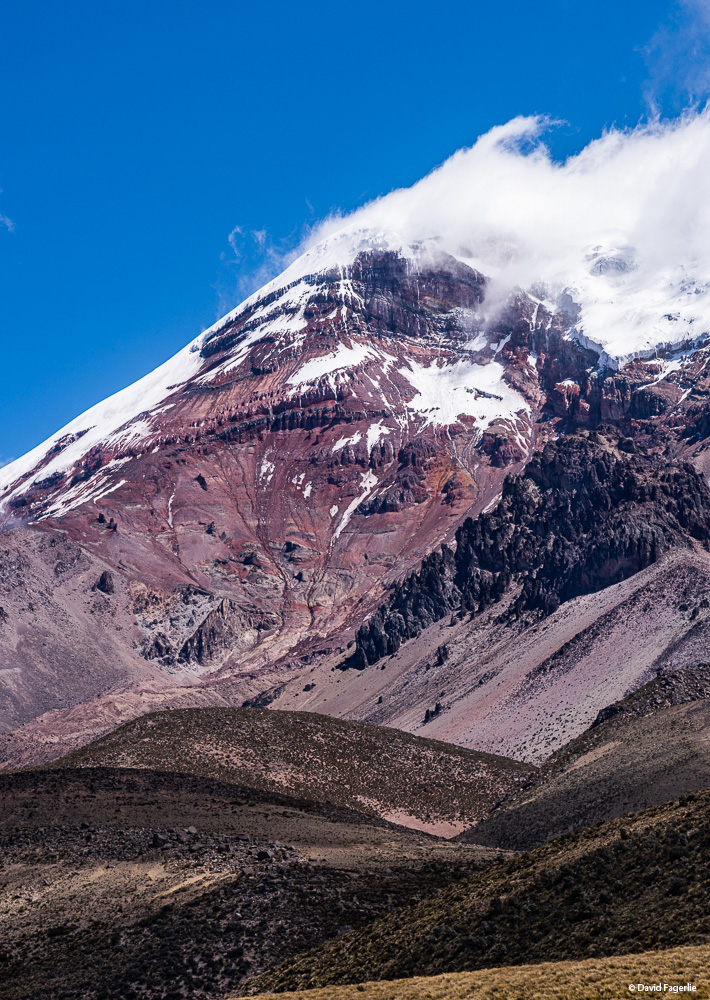
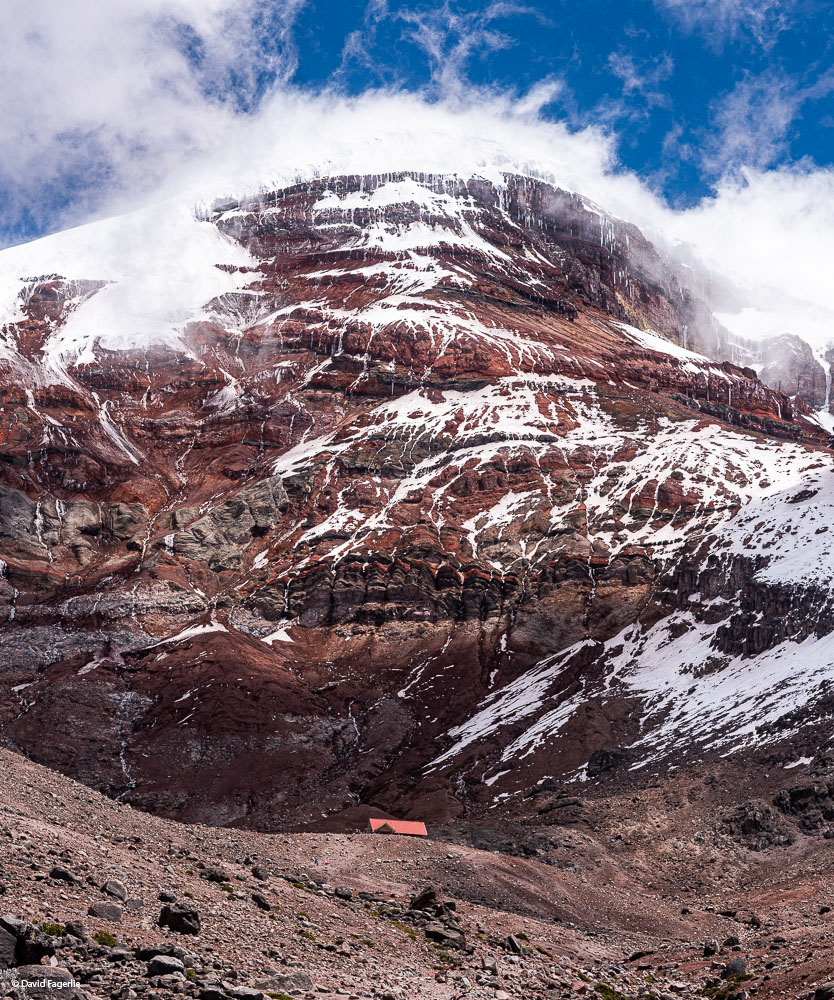
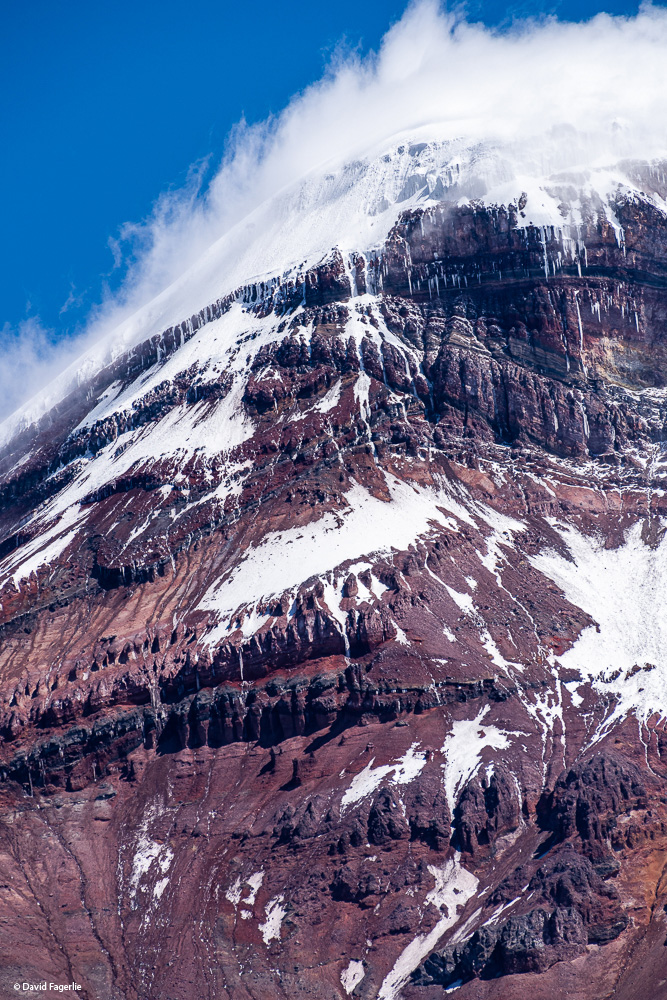
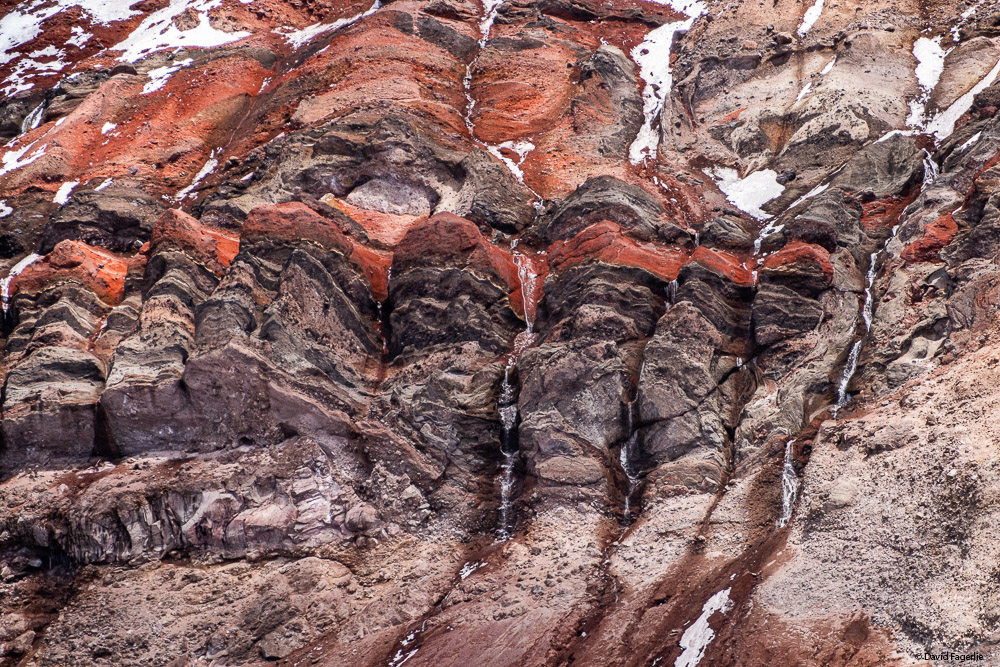
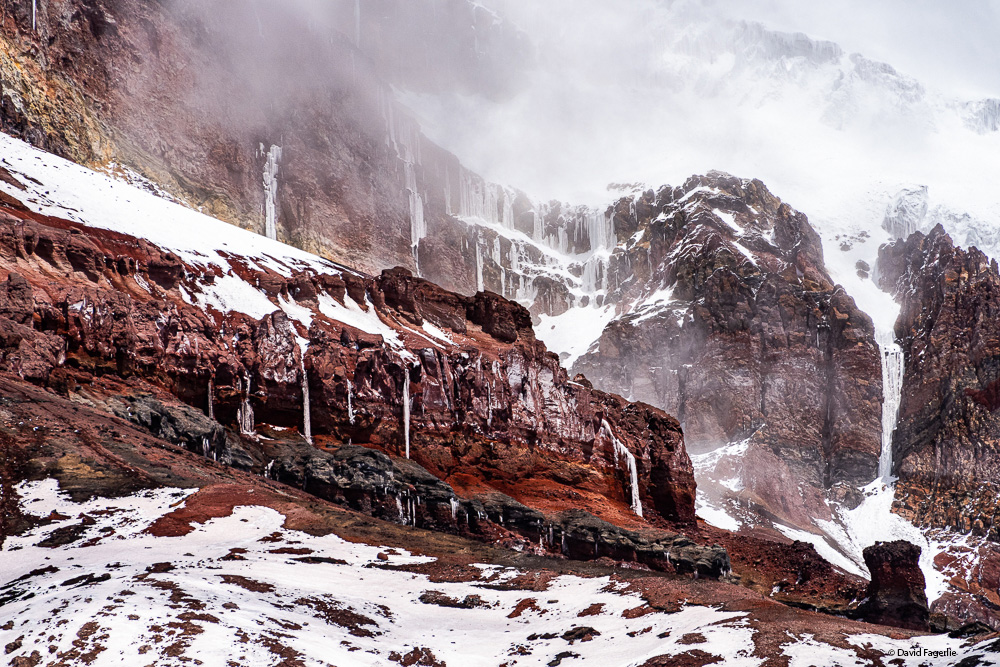
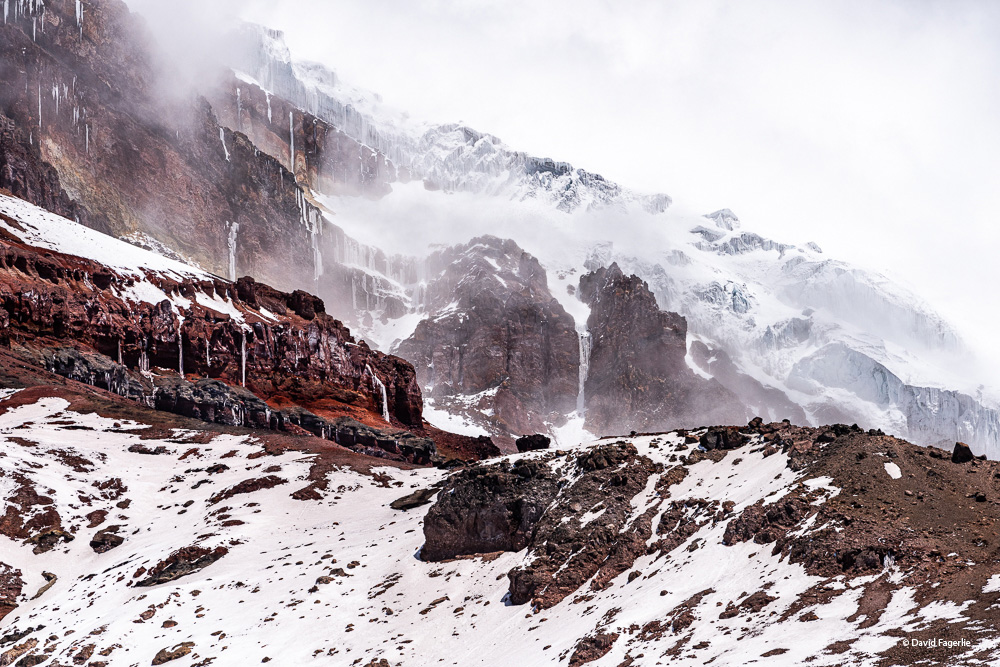
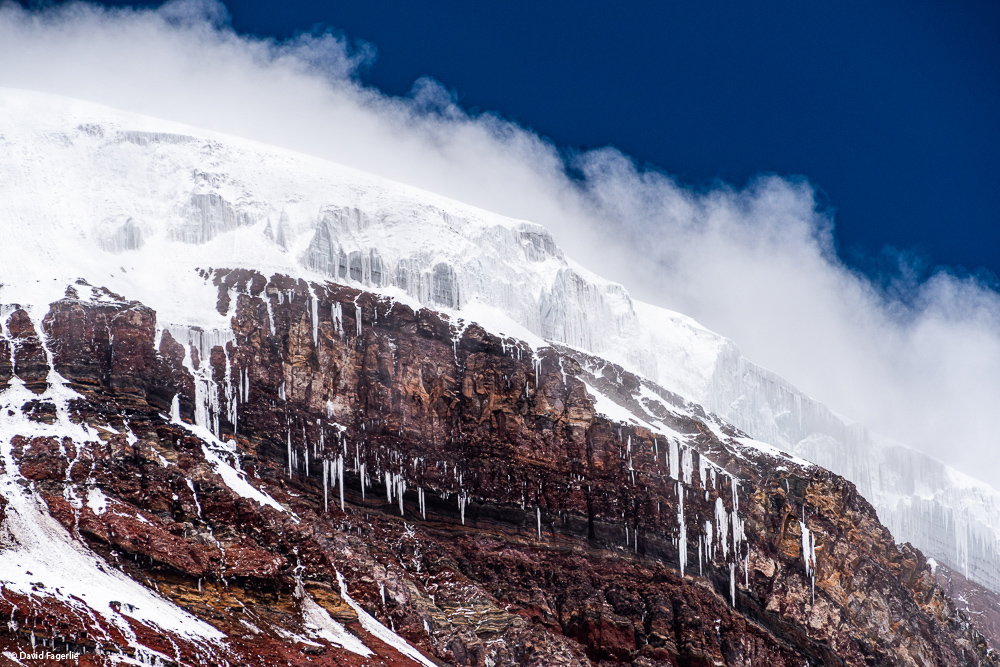
At almost 18,000 feet I could look down on some of the glaciers.
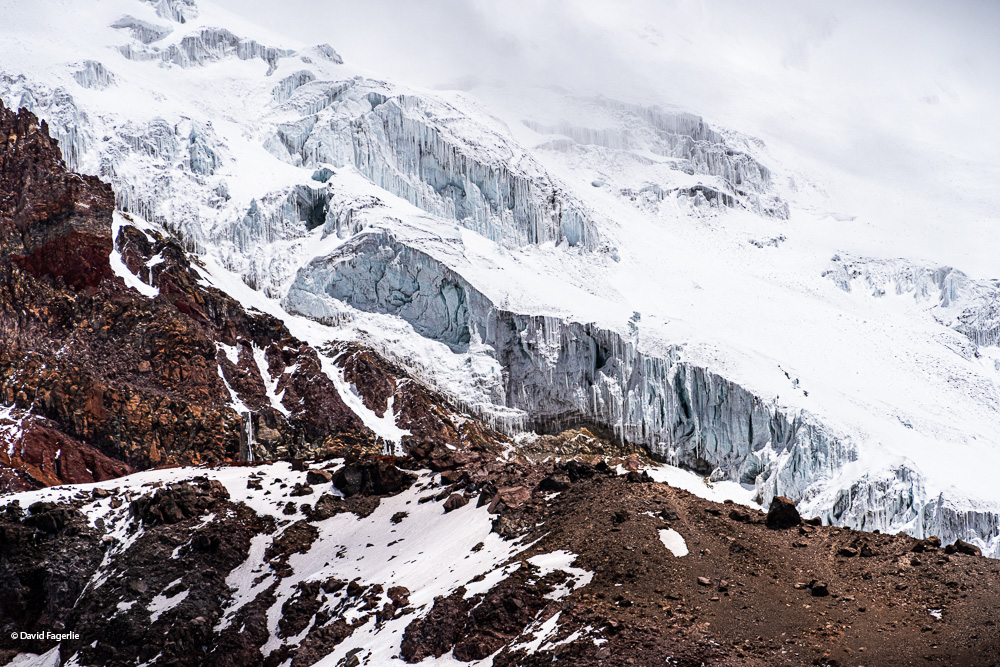
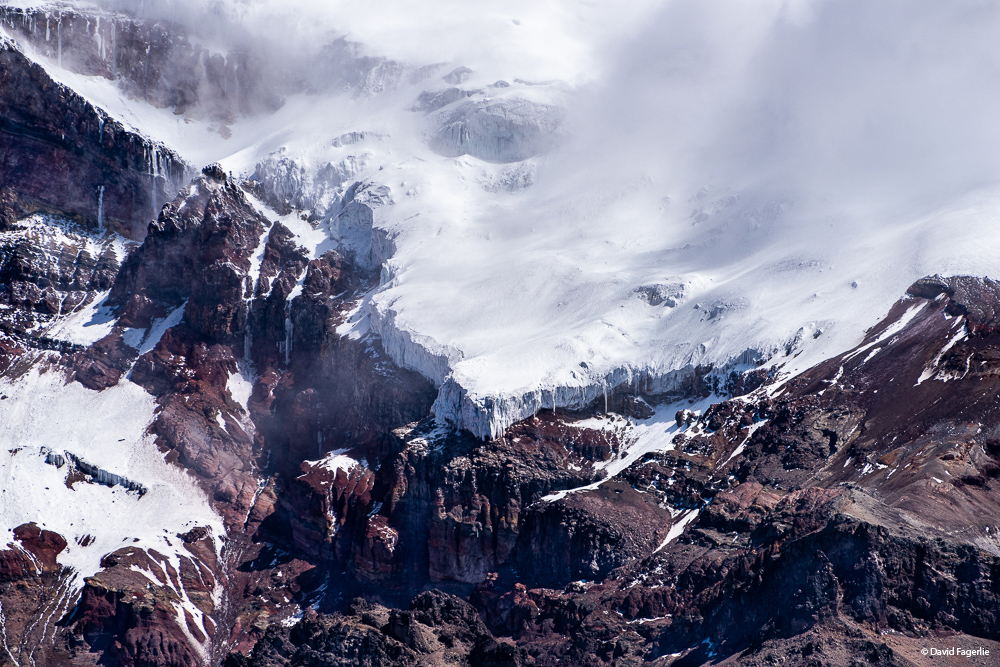
Maria Jose took us to a farm where the owner treated us to an ecuadorian liquor unlike anything I had tasted. We could see Chimborazo in softer light from there. I was too full of curiosity to sit in one place; I walked out of the farmer’s house and around to the “backyard.”
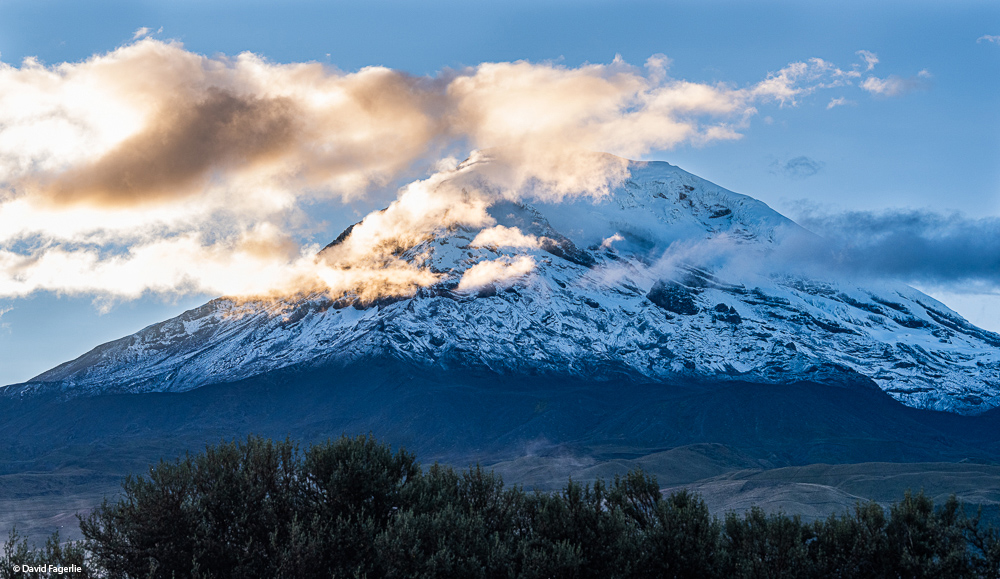
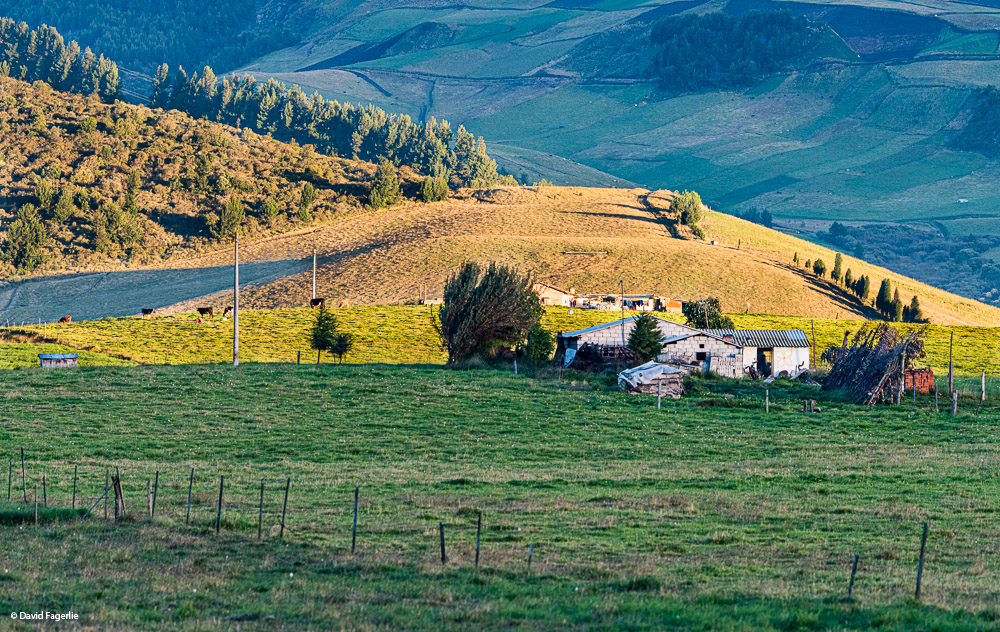
The farmer, a very cool dude, followed me outside to show me around. There was a llama with a newborn that he said was three hours old. The new born seemed too big to be three hours old; however, I showed a photo to a friend that owns an alpaca farm and he confirmed that when newborns are delivered they are indeed about that size. I recruited my fellow travelers so they would not miss this sight.
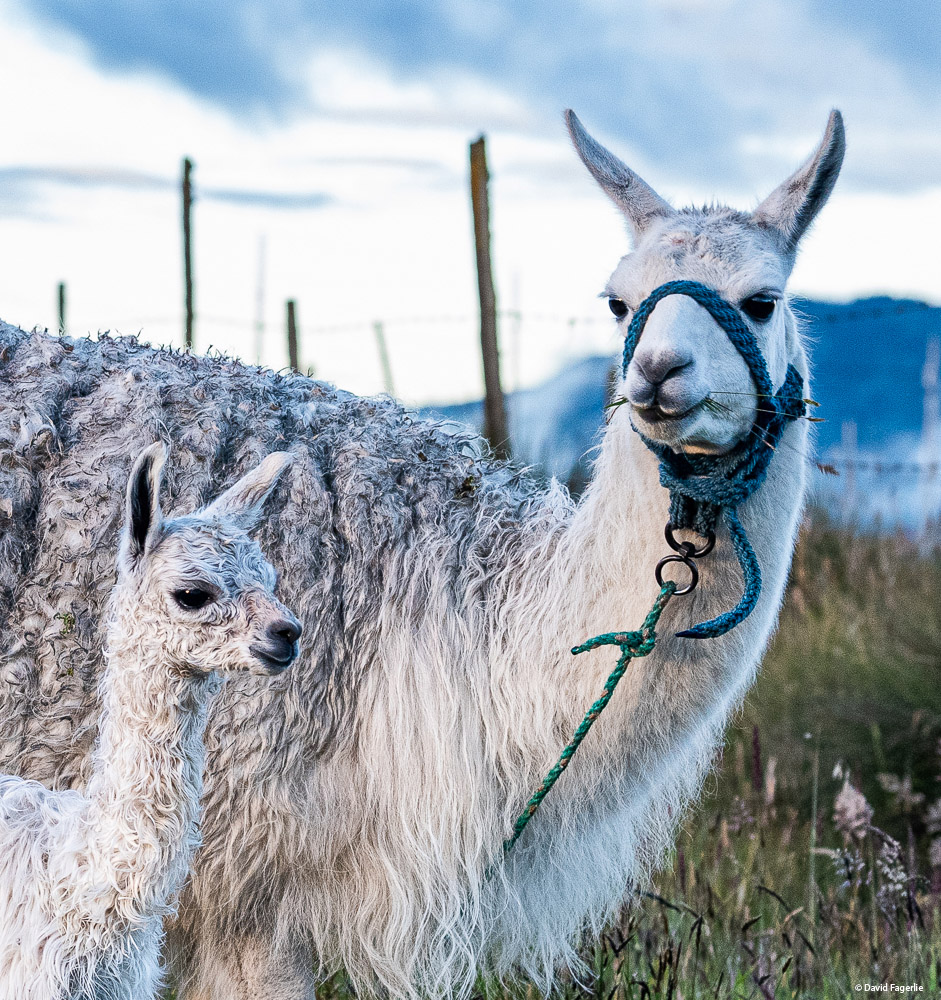
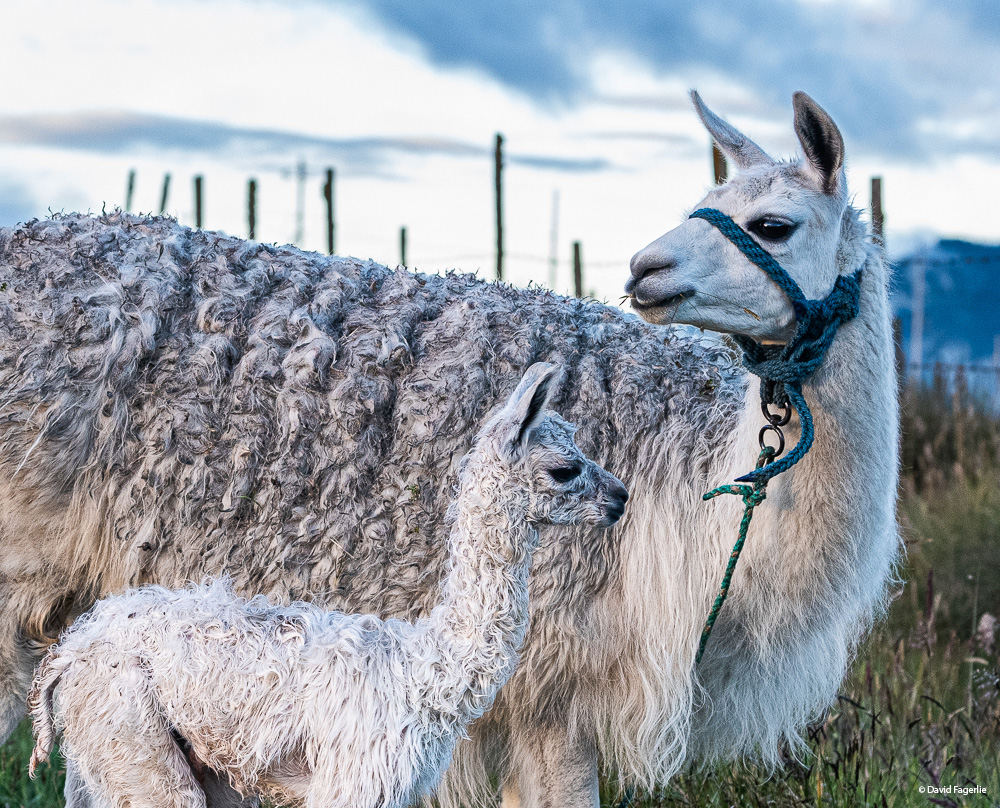

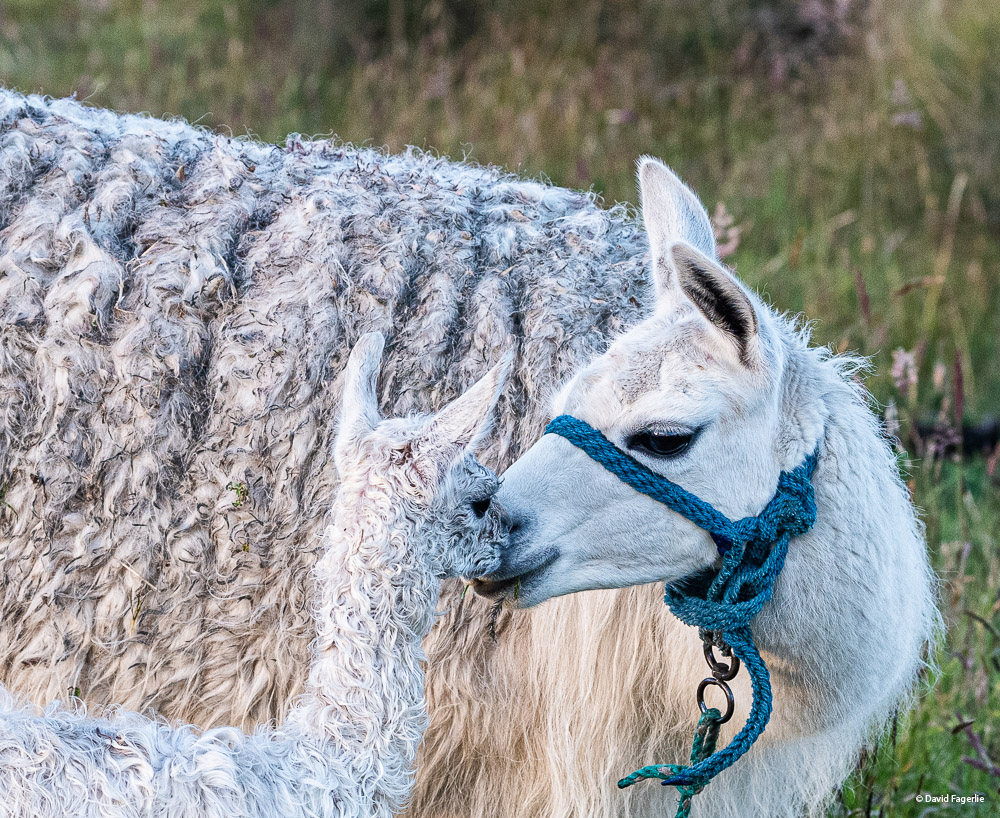
Higher resolution images of this chapter can be reached in its gallery by clicking HERE.
Next week we explore more of the Avenue of the Volcanoes in Chapter 2. See you then.
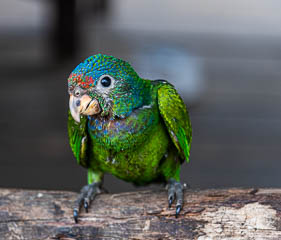
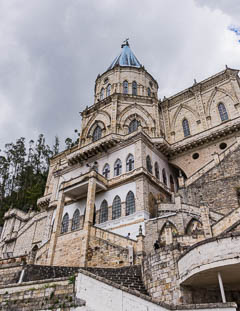
May 29, 2021
Chapter 2: Quilotoa to Puyo
The day after we met the newborn llama we headed to Quilotoa Lake.